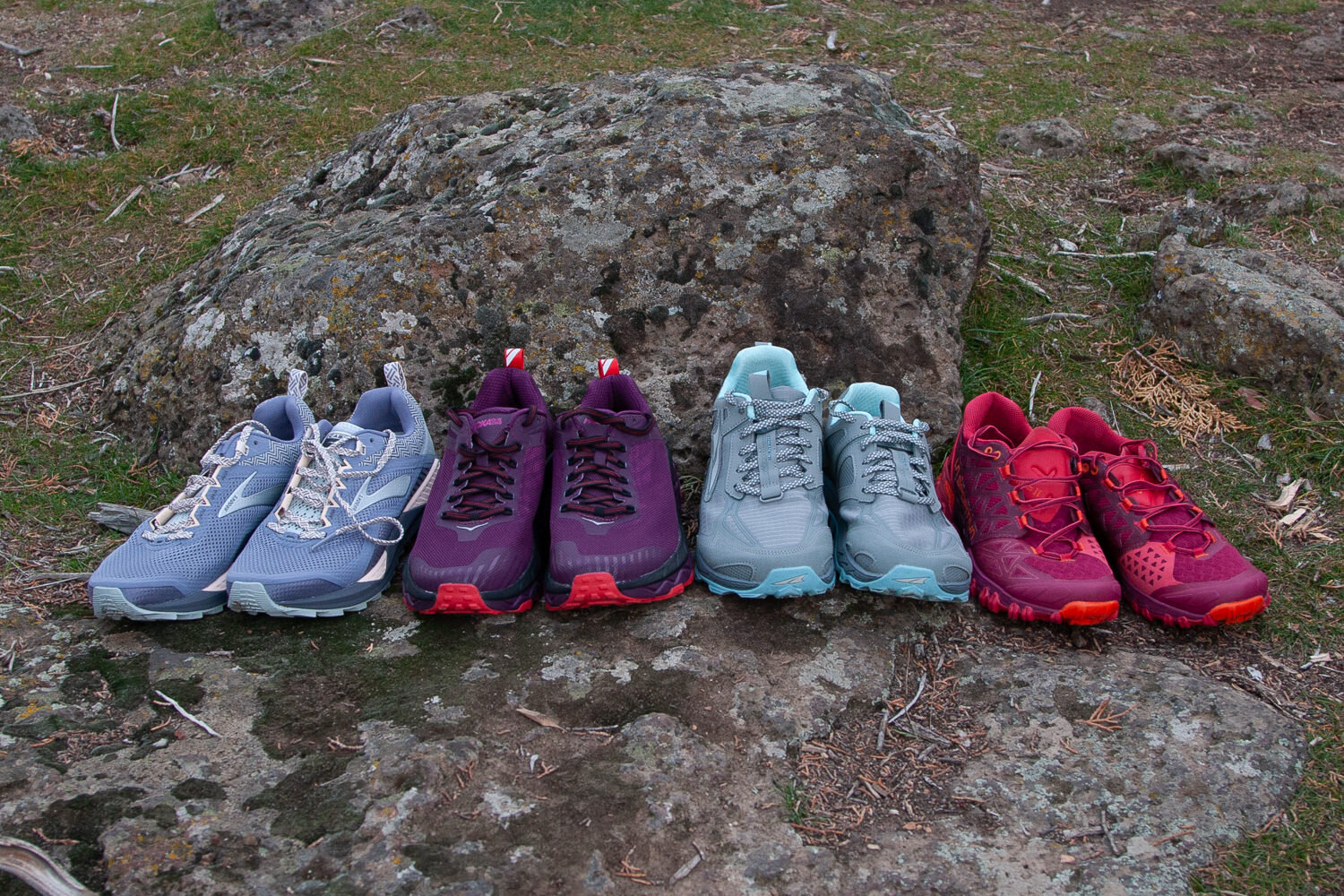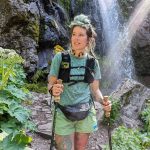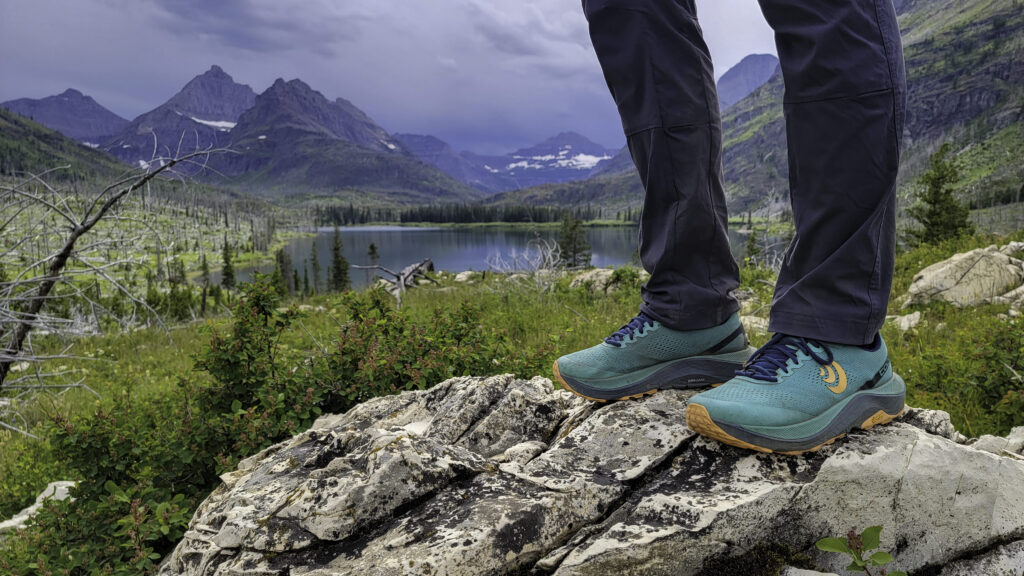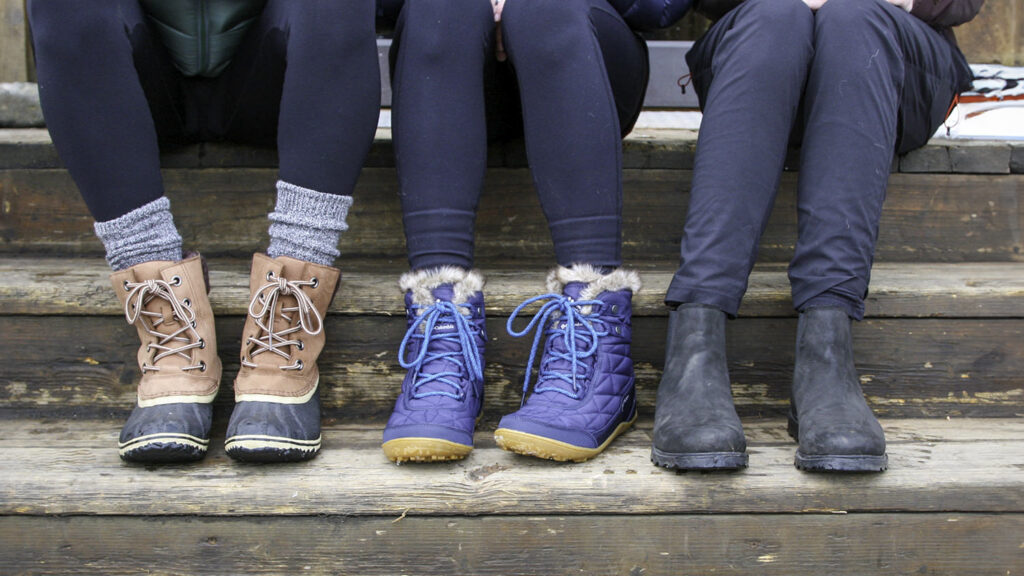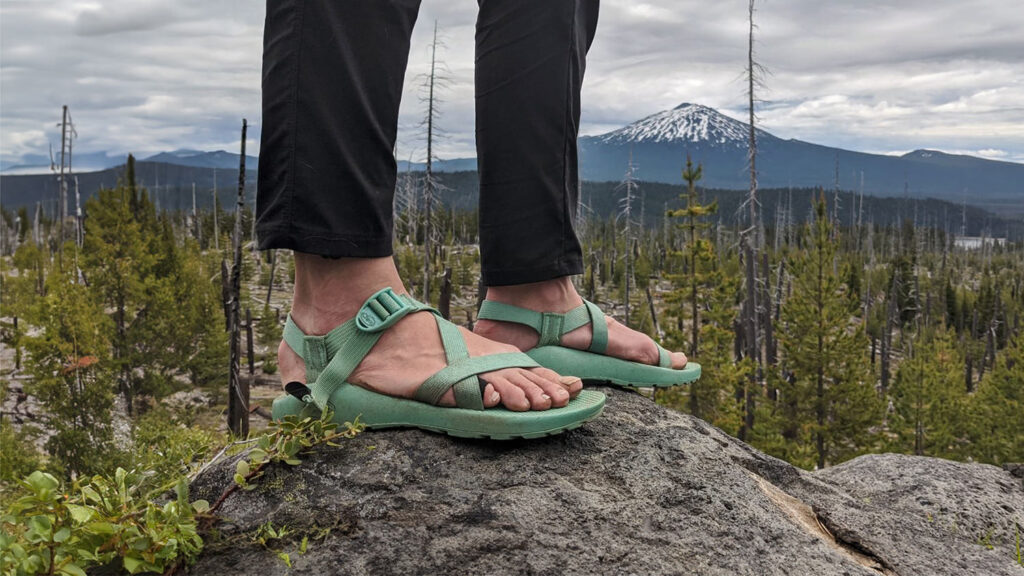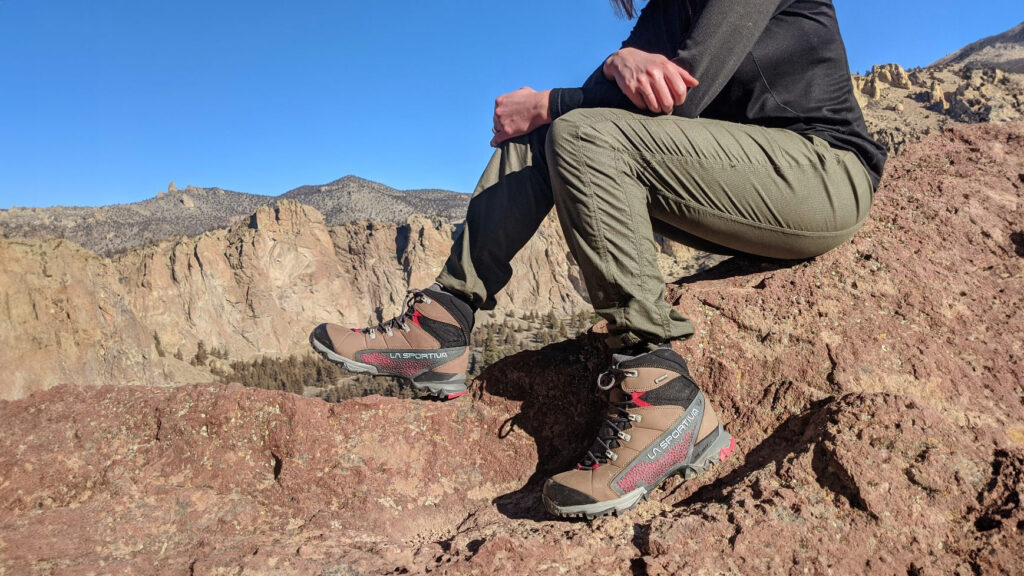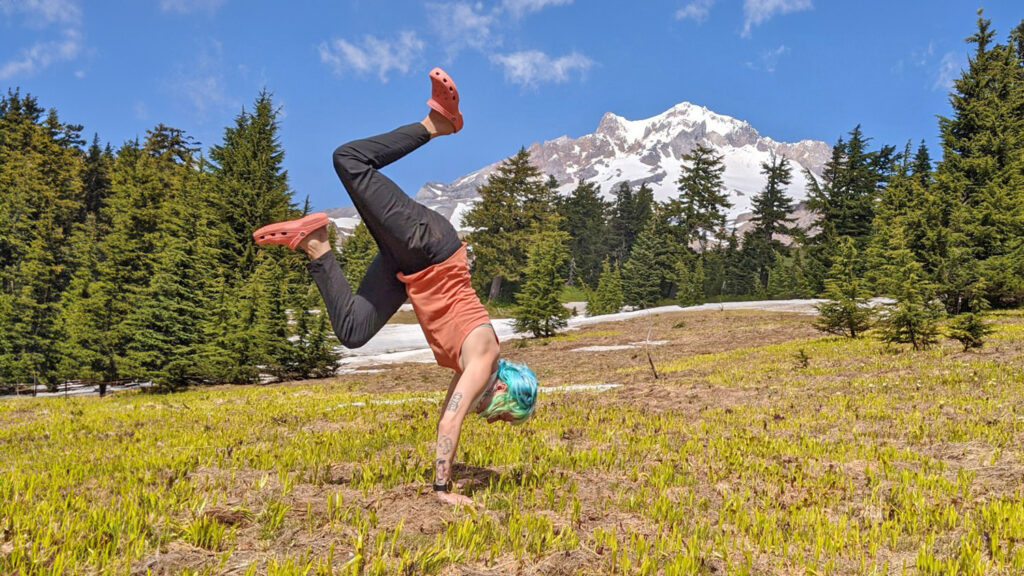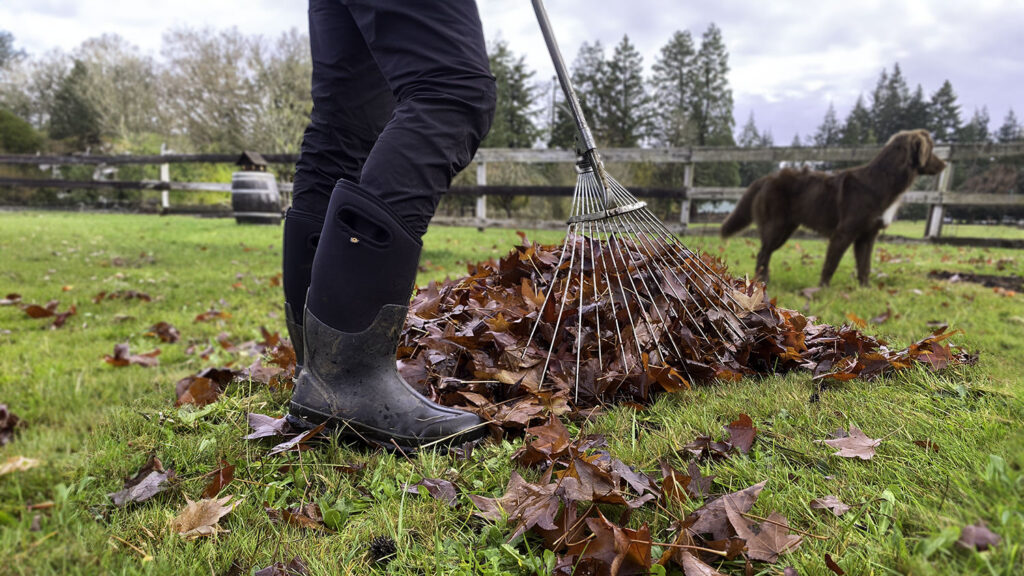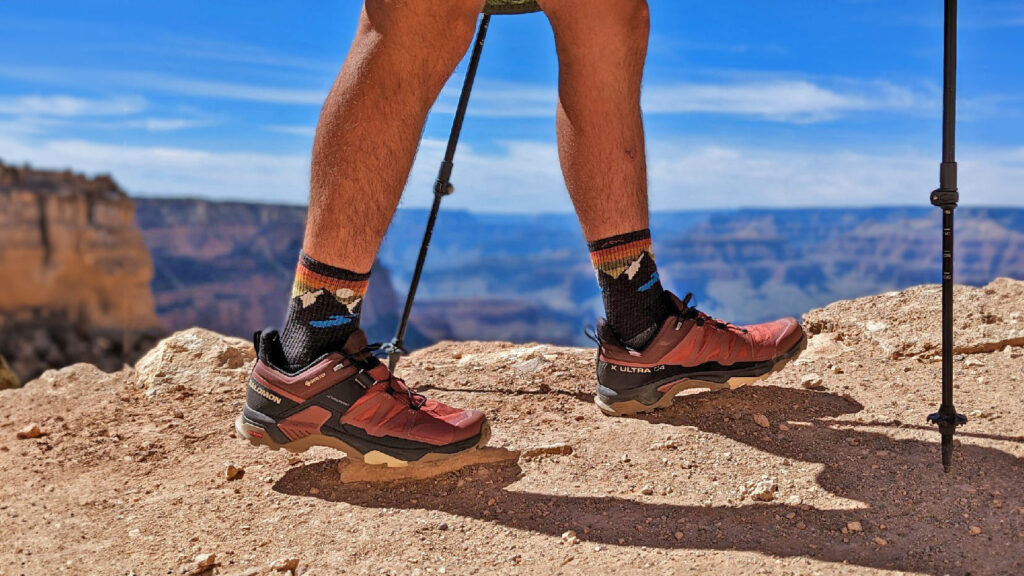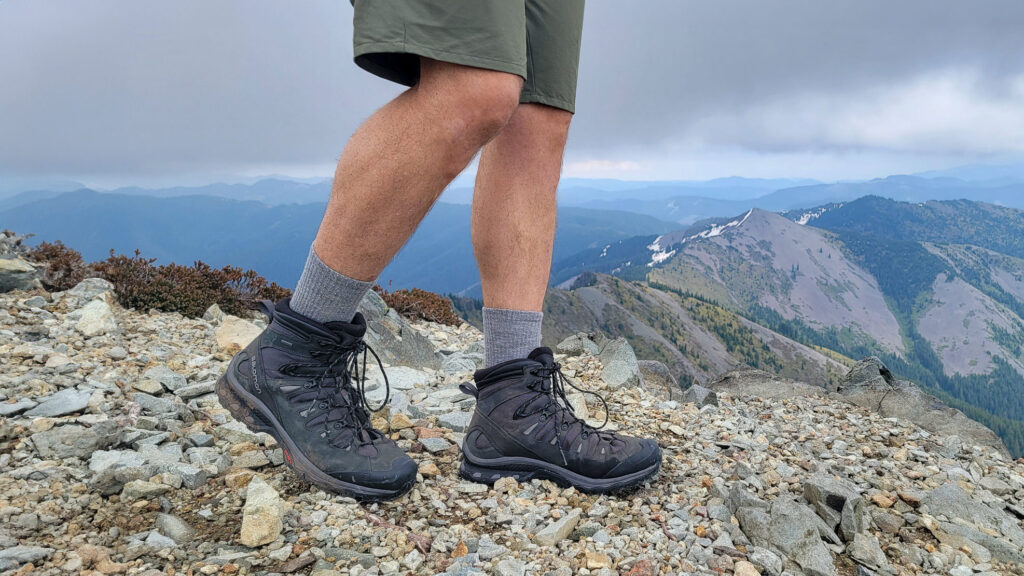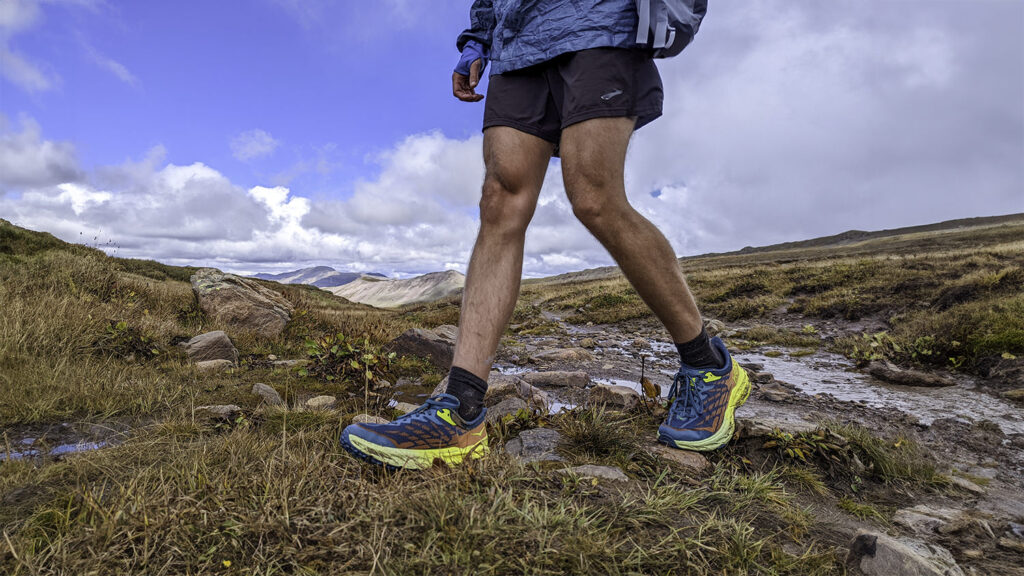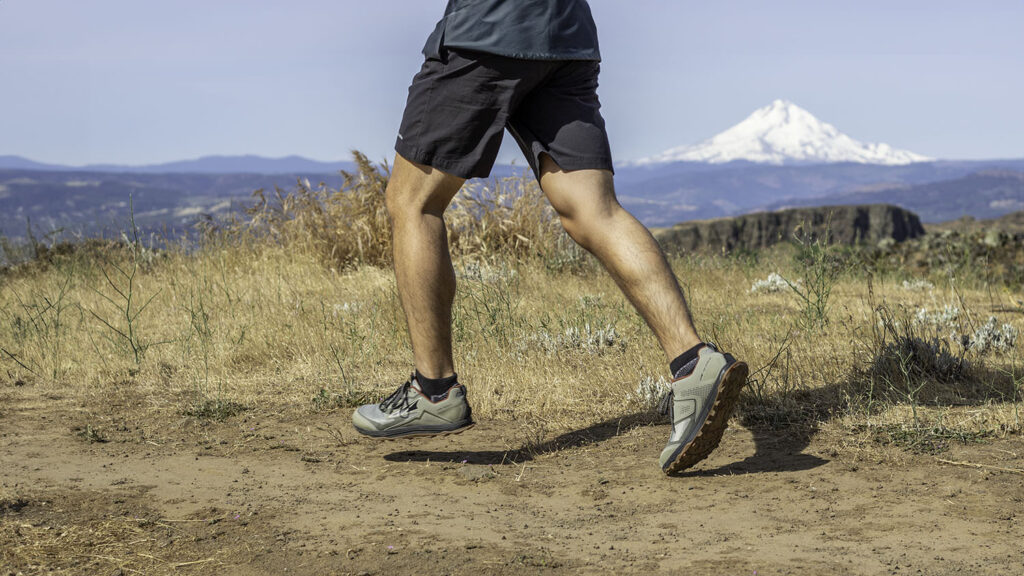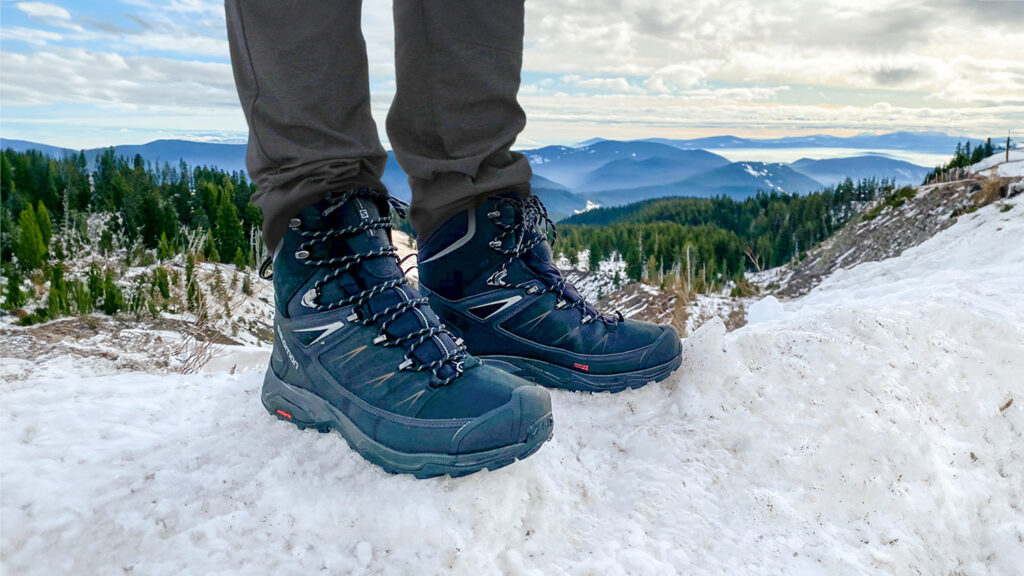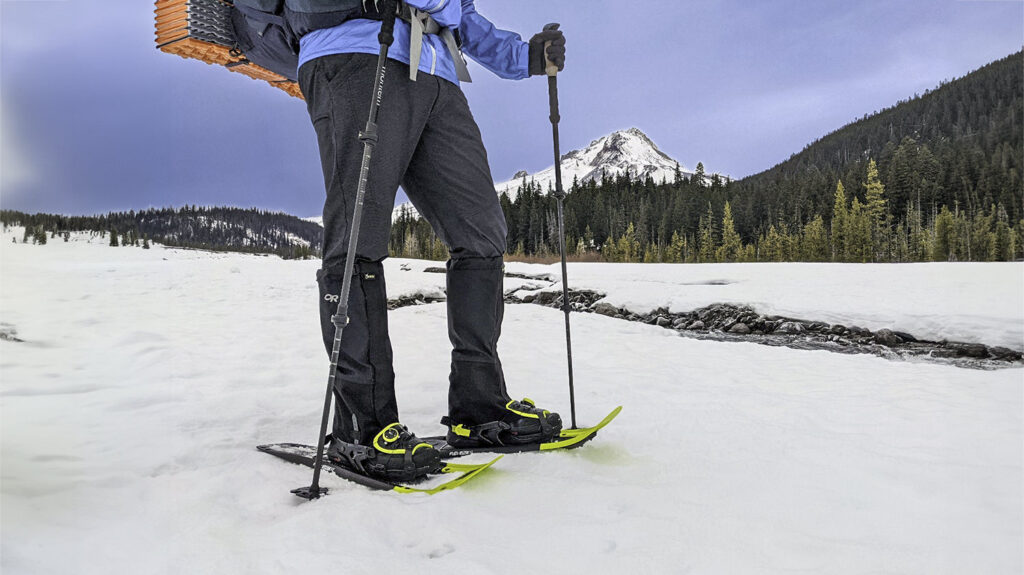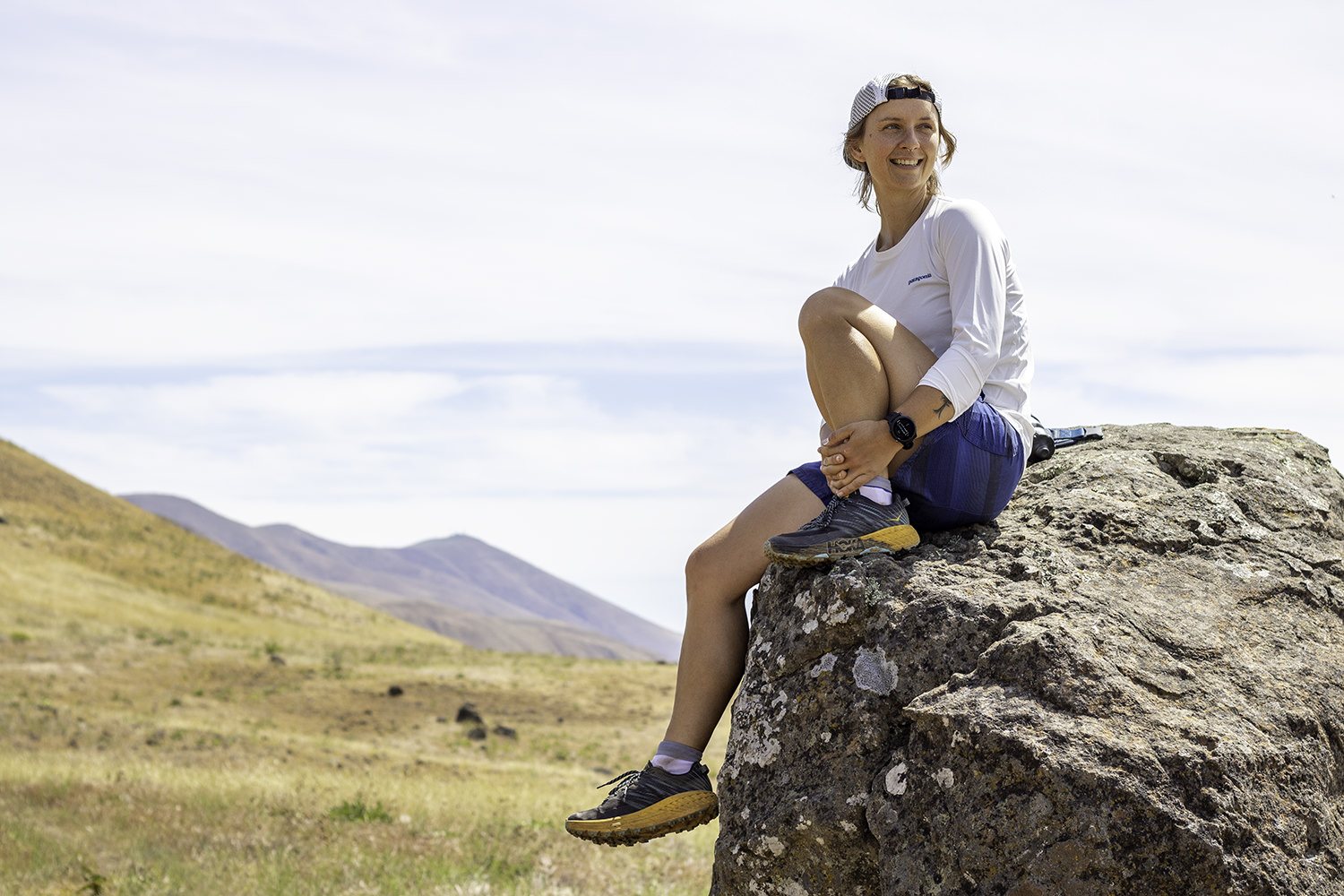
Whether you’re a dedicated trail running fanatic or a road runner looking to swap pavement for dirt, a good pair of running shoes will make all the difference. Your trail runners will need to keep you moving confidently over all kinds of terrain, so it’s important to find a pair that’s suited to your particular needs.
From skyrunning on technical trails to groomed singletrack, our team of experts has put up hard miles in over 40 pairs of the top trail runners on the market. We tested models from brands like HOKA, Salomon, Altra, Brooks, and more for traction, cushioning, and durability of each pair to bring you this list of best trail running shoes for any budget.
Just getting into the sport or looking to make a few upgrades? We can help you get outfitted with the best running vest, GPS watch, and socks to help you hit run club in style, complete your next race, or grab that PR you’ve been chasing.
Quick Picks for Women’s Trail Runners
Check out this quick list of our favorite women’s trail running shoes if you’re in a hurry, or continue scrolling to see our full list with in-depth reviews.
Best Women’s Trail Running Shoes Overall: HOKA Speedgoat 5 ($155)
Best Budget Trail Running Shoes for Women: Salomon Sense Ride 5 ($140)
Best Zero-Drop Trail Running Shoes for Women: Altra Lone Peak 8 ($140)
Best Traction for Mixed Terrain: Saucony Peregrine 14 ($140)
Ultralight Trail Shoes for Runners Who Want to Go Fast: Brooks Catamount 3 ($170)
Highly Cushioned Trail Running Shoes for Daily Training: Topo Ultraventure 3 ($150)
Best Trail Running Shoes for Race Day: Merrell MTL Skyfire 2 Matryx ($210)
Best Trail Running Shoes for Soft Terrain: Salomon Speedcross 6 ($145)
What’s new
We’ve made some big updates to our best trail runners list. We put some new models to the test, and here’s how they stack up:
- We’ve added the Brooks Catamount 3 as our top ultralight pick for moving fast through the mountains.
- Merrell’s MTL Skyfire 2 Matryx is our recommendation for running short trail races.
- The Xero Shoes Mesa Trail II takes the title of Best Barefoot Running Shoes.
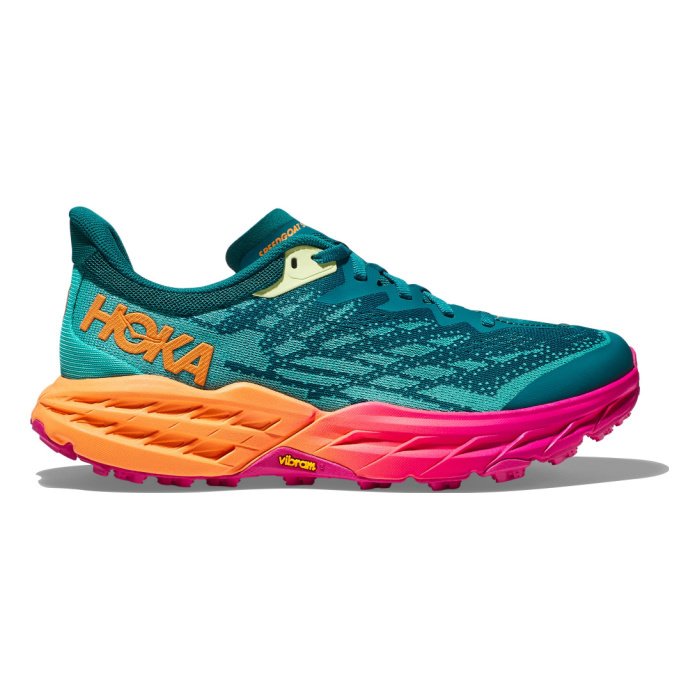
Women’s HOKA Speedgoat 5
Best Women’s Trail Running Shoes Overall
Price: $155
Weight (Pair): 1 lb. 1 oz.
Heel-to-Toe Drop: 4 mm
Cushioning: Maximum
Best For: Mixed terrain
Pros
- Very well-cushioned
- Excellent traction
- Lightweight
- Versatile
- Very durable for the weight
- Wide sizes available
Cons
- Expensive
- Less sensitive
- High stack height
The HOKA Speedgoat 5s have turned many runners on to the benefits of maximum cushioning. Long-distance diehards and casual joggers alike are singing the praises of these ultimately comfy shoes, and they’ve quickly become a go-to for the CleverHiker team.
The ample cushioning makes the Speedgoats highly effective at protecting your feet on rocky terrain, reducing stress on your joints on hard-packed surfaces, and maintaining support over long distances. This is why many long-distance backpackers will use these as hiking shoes as well. We recently took the Speedgoats on a run in Arizona’s rocky Superstition Mountains, and our feet were still feeling fresh by the end of the day thanks to the cushy midsoles.
While the plush midsole makes the Speedgoats a common pick among ultrarunners who need all-day comfort, those who keep weekly mileage lower still have plenty to gain by choosing these shoes. The Vibram Megagrip outsole features deep, sticky lugs that excel on everything from loose dirt to granite slab. This versatile traction compound allows you to tackle a wide array of different trails with just this one pair of shoes.
Of course no shoe is a one-size-fits-all, and the Speedgoats won’t be everyone’s cup of tea. The thick midsole means you lose out on a fair bit of ground feel, and runners who aren’t used to the stack height (31 millimeters at the heel) may find these shoes somewhat unstable on rocky or off-camber routes. Those looking for a similarly cushioned shoe with less height may prefer the less chunky HOKA Torrent 3s. Still, the soft upper of the Speedgoats does allow you to feel some connection to the terrain when moving quickly.
The low weight of the Speedgoats adds to their all-day comfort, and they’re more durable than many others in their weight class. These versatile trail shoes are the perfect pick for runners wanting comfy footwear that’ll hold up to tough use.
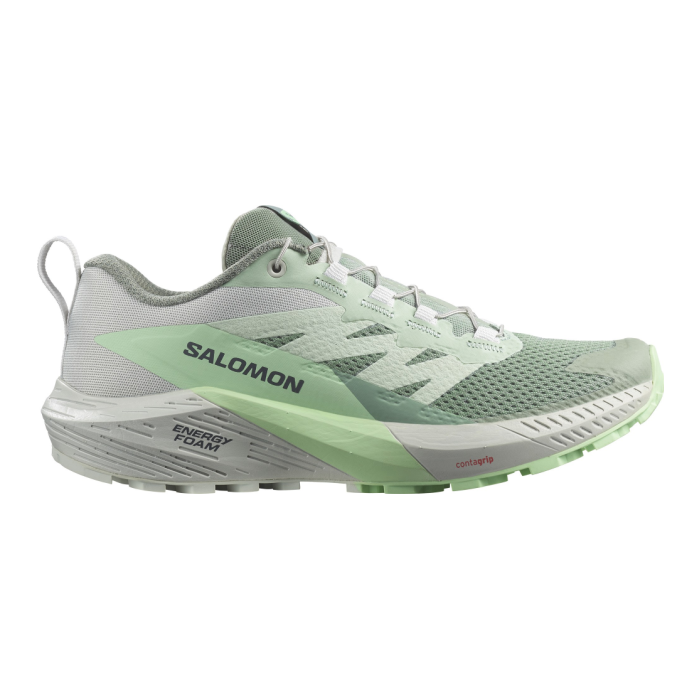
Women’s Salomon Sense Ride 5
Best Budget Trail Running Shoes
Price: $140
Weight (Pair): 1 lb. 1.4 oz.
Heel-to-Toe Drop: 8 mm
Cushioning: Moderate
Best For: Road to trail
Pros
- Suitable for trail or road running
- Less expensive
- Excellent traction
- Lightweight
- Highly breathable
Cons
- Quicklace system takes some getting used to
- Subpar traction on smooth or wet rock
If you’re looking for one shoe that can do it all, the Salomon Sense Ride 5 may be just what you need. From road to trail, these shoes have a well-balanced feature set that goes the distance.
When we took the Sense Rides for a run near Canyon Lake in Arizona, they transitioned flawlessly from the approach on Apache Trail road to the rocky ascent up the Boulder Canyon Trail. These shoes have a good amount of cushioning that helps with shock absorption on pavement, as well as a stable design and sticky traction for variable terrain on trail.
Salomon loyalists will likely notice that the Sense Rides feel a bit roomier than many other models from this brand. Most notably, the toe box feels more spacious and provides a good amount of room for your toes to spread, reducing the risk of jamming them into the front of the shoe while running downhill. We’re not saying these are wide-fit shoes, but the shape of the Sense Rides should work well for runners who aren’t on the ends of the narrow-wide spectrum.
The Sense Rides have a somewhat unique lacing system (what Salomon calls the Quicklace) that takes some getting used to, but we’ve grown to love it on our runs. This single-pull system makes it fairly easy and intuitive to get a locked-in fit across the midfoot which combines with the structure of the shoe to provide good stability. Once you’ve dialed in the fit you want, the Quicklace tucks neatly into a pocket on the tongue.
With a build that’s well-suited to road or trail, breathable mesh construction, and a very approachable price for the features, the Sense Rides are an exceptional budget-friendly option for runners who like to mix it up in their daily training.
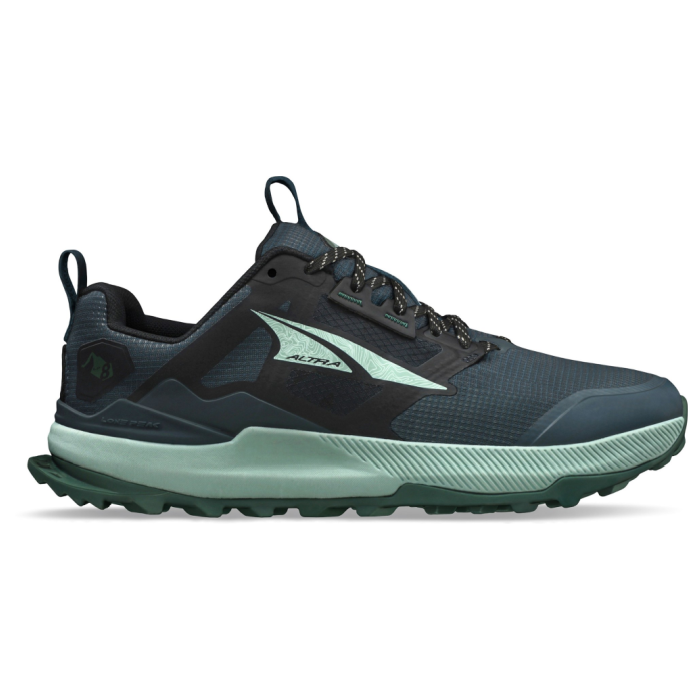
Women’s Altra Lone Peak 8
Best Zero-Drop Trail Running Shoes for Women
Price: $140
Weight (Pair): 1 lb. 2.3 oz
Heel-to-Toe Drop: 0 mm
Cushioning: Moderate
Best For: Mixed terrain
Pros
- Roomy toe box
- Less expensive
- Excellent traction
- Lightweight
- Highly breathable
- Durable for the weight
- Wide sizes available
Cons
- Zero-drop takes some getting used to
- Wide toe box may not work for some
The Altra Lone Peak 8s are a favorite among long-distance runners due to their low weight, grippy outsole, and roomy fit. Altra’s signature Footshape toe box allows your toes to spread naturally which provides confidence and stability over tricky terrain.
We’ve used the Lone Peaks for mountain running for many years, and the 8th iteration doesn’t disappoint. This model keeps all of our favorite updates from the Lone Peak 7 – a more locked-in midfoot, an improved traction pattern with more lugs, and a seamless upper design – but it swaps out the Air Mesh material for a more durable Ripstop mesh upper. The result is a lightweight pair of shoes that punches well above its weight class in terms of longevity.
Moderate cushioning and a not-too-stiff, not-too-soft rockplate provide good ground feel and responsiveness without leaving your feet vulnerable to getting beaten up by rocks and roots. And we find that the proprietary Altra EGO Foam in the midsole doesn’t flatten out after long days on trail.
If you’re considering the Lone Peaks but you’ve never tried zero-drop shoes before, you should buy them well in advance of any serious distance runs you have planned. Zero-drop shoes aren’t for everyone, and they can be hard on the achilles for those who aren’t used to them. Going too hard too fast can result in painful tendon injuries, but give your body proper time to adjust and you may just find that the benefits of zero-drop are worth the effort. These shoes won’t force your foot out of your natural gait, they may help with balance since your heel and forefoot are at the same height, and they can strengthen the muscles in your feet and ankles.
Trail runners seeking a pair of shoes that strikes a good balance between sensitivity and foot protection may find the Lone Peaks to be a perfect match. If you’re a longtime zero-drop runner or you’ve been curious about trying this style of shoe, there’s no better model than the Lone Peaks.
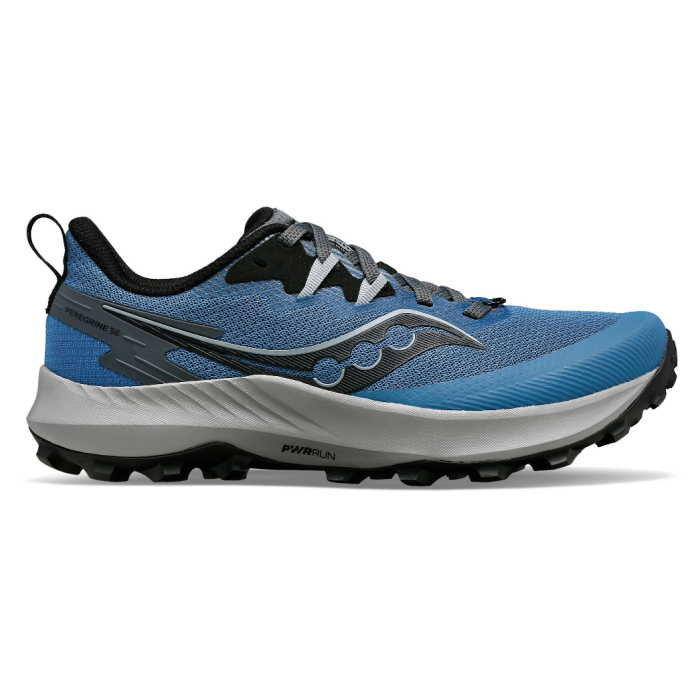
Women’s Saucony Peregrine 14
Best Traction for Mixed Terrain
Price: $140
Weight (Pair): 1 lb. 1 oz.
Heel-to-Toe Drop: 4 mm
Cushioning: Moderate
Best For: Mixed terrain
Pros
- Exceptional traction
- Less expensive
- Highly breathable
- Lightweight
- Very durable for the weight
- Wide sizes available
Cons
- Upper is a little stiff
- Fit is a bit narrow
We’ve been running in the Saucony Peregrines for many years now, and we love them for their exceptional comfort and aggressive traction. Whether it’s a rocky mountain route, a muddy forest trail, or a groomed trail in our favorite local park, the Peregrines bite into the terrain and provide a confident ride.
On a recent outing at Arizona’s Picacho Peak, we tested the stability and rock plate on a technical trail. While these aren’t the most cushioned shoes we’ve ever worn, the rock plate was sufficient to keep our feet from getting beaten up by all the rocks. As for stability, the upper starts off a bit stiff but becomes a little softer over time to offer a surprisingly locked-in feel for how light and minimal it is.
If you’ve been a longtime fan of the Peregrines like we have, you’ll be happy to know that the tongue has been greatly improved over the previous model. The newest Peregrine features a well-padded tongue with a gusseted design that does an excellent job of preventing debris from entering through the top of the shoe.
The mesh upper is woven tightly for a good blend of durability and breathability, and there are several reinforced areas that add to the longevity of this shoe. The fit of the sock liner is on the narrow side, but wide sizes are available if you need more wiggle room.
We recommend this shoe for those who frequently run on tricky terrain and require unwaveringly reliable traction. This versatile trail shoe comes in at a great price and will keep going for hundreds of miles.
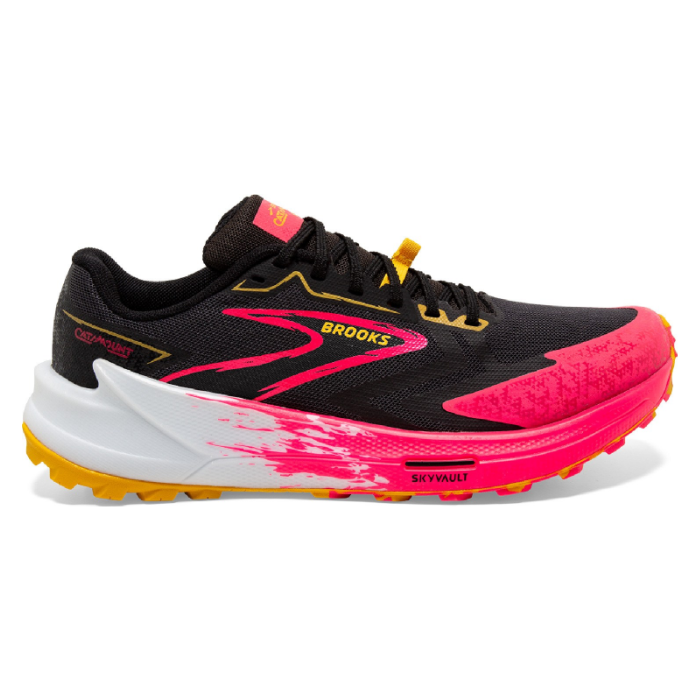
Women’s Brooks Catamount 3
Ultralight Trail Shoes for Runners Who Want to Go Fast
Price: $170
Weight (Pair): 1 lb. 0.8 oz.
Heel-to-Toe Drop: 6 mm
Cushioning: Moderate
Best For: Mixed terrain
Pros
- Ultralight
- Excellent traction
- Secure lacing system
- Highly breathable
- Good energy return
- Durable for the weight
Cons
- A bit expensive
- Cushioning isn’t as effective at slower speeds
Looking for a fast shoe for PR attempts and short races? The ultralight Brooks Catamount 3 may be the one. These are some of the lightest trail shoes on our list, and they’re built for speed.
They have a neutral design that’s meant to support the natural movement of your feet without guiding them into a particular stride. The snug fit, wide base of the outsole, and secure crinkle-cut laces deliver the perfect amount of stability for runners who don’t need a ton of support for correcting overpronation or supination.
The Catamounts feature adaptive cushioning and propulsion plates that provide a responsive ride, so you’ll get out of these shoes what you put in. In plain terms, the midsoles feel a lot softer when moving at speed and the energy return from the SkyVault plates propel you forward on ascents and flat trail while also keeping your feet protected from roots and rocks.
While these details are enticing for runners chasing course records on Strava, those who prefer to move at a casual pace won’t reap all the benefits of the Catamount build. The cushioning feels noticeably firmer at slower speeds, so runners falling in the latter category should consider the HOKA Speedgoats or the Topo Ultraventures for a lightweight shoe that feels plush underfoot at any pace.
Overall the Catamounts are a great choice for race day and for runners who are training at speed. These light and breathable shoes are built to last and will take you from base to peak in a flash.
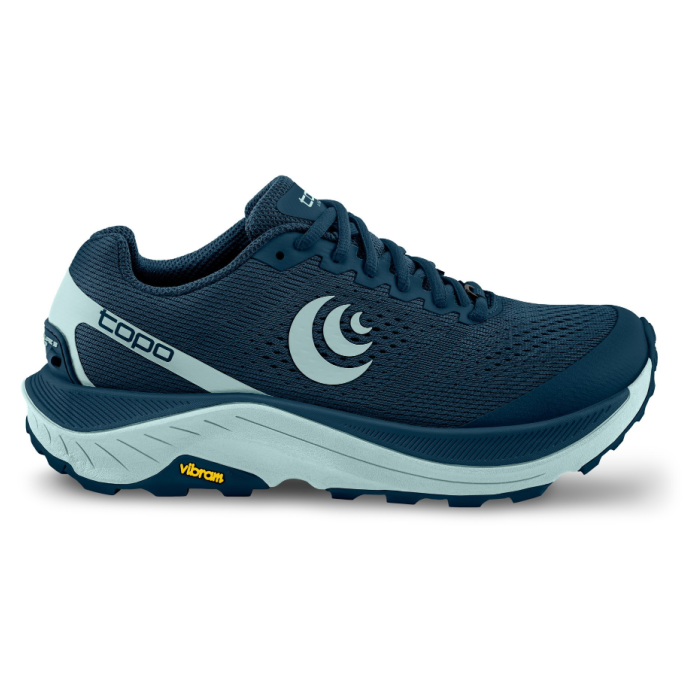
Women’s Topo Athletic Ultraventure 3
Highly Cushioned Trail Running Shoes for Daily Training
Price: $150
Weight (Pair): 1 lb. 0.6 oz.
Heel-to-Toe Drop: 5 mm
Cushioning: Maximum
Best For: Mixed terrain
Pros
- Ultralight
- Highly breathable
- Excellent traction
- Well-cushioned
- Roomy toe box
- Wide sizes available
Cons
- A bit expensive
- Less sensitive
- Not as durable
The Topo Athletic Ultraventure 3 trail runners are some of our favorites for long-mileage days (both running and hiking) because they’re lightweight, breathable, and highly cushioned.
The design of the Ultraventures blends that of two of our other favorite running shoes. They have a secure heel cup and midfoot that opens up to a wider toe box allowing your toes to spread naturally – similar to the shape of the Altra Lone Peaks. And they have maximum underfoot cushioning that provides all-day comfort for long runs like the HOKA Speedgoats. So the Ultraventures give you the best traits of both shoes if you’re after a roomy runner with a cushy midsole.
The Vibram XS Trek rubber on the outsole of the Ultraventures is highly versatile and even excels on wet surfaces. Because of the excellent traction, we find ourselves choosing these shoes for a wide variety of trails – from skyrunning across granite-laden ridges to bounding through the last snow of the season on forest trails.
With a stack height of 35 millimeters at the heel, the Ultraventures isolate you from the ground more than most other trail running shoes. On the positive side, the tall stack height is mostly due to cushioning which protects your feet from roots and rocks. But this also means you’ll have a tougher time feeling out trail features, which doesn’t work so well for runners who prefer to have a more interactive relationship with the trail.
Still, we think most runners will see the cushy build as a plus, and the Ultraventures are great for those who need a lightweight shoe with a little extra wiggle room in the toe box.
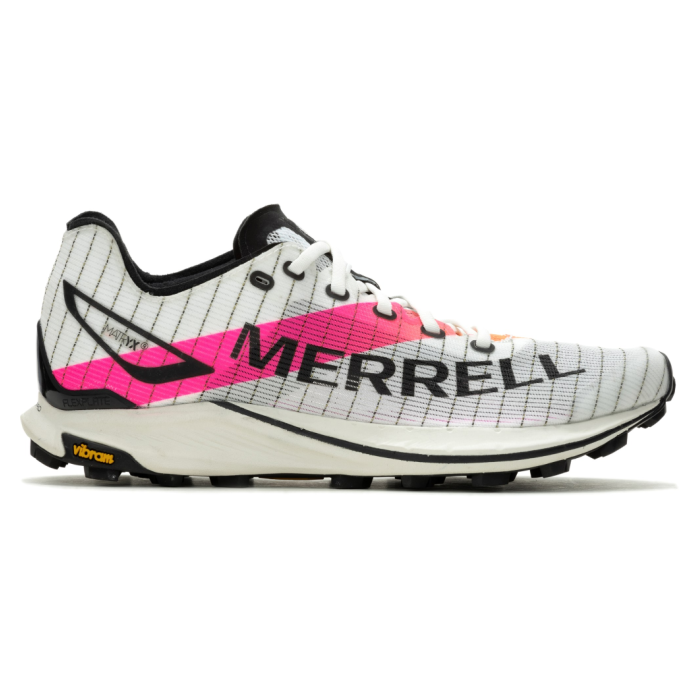
Women’s Merrell MTL Skyfire 2 Matryx
Best Trail Running Shoes for Race Day
Price: $210
Weight (Pair): 12.3 oz.
Heel-to-Toe Drop: 6 mm
Cushioning: Light
Best For: Rugged terrain
Pros
- Ultralight
- Excellent traction
- Very durable for the weight
- Good energy return
Cons
- Expensive
- Not cushioned enough for ultra-distance races
Merrell’s MTL Skyfire 2 Matryx trail runners are so light that they feel like donning a pair of high-performance socks. These ultralight trail running shoes are our top choice for short races and quick sprints on rugged terrain.
The build of the Skyfires may be minimal, but these shoes pack quite the punch on trail. The Vibram Megagrip outsole – though part of what makes them so expensive – is the ultimate grippy compound for taking on rugged mountain trails. This is one of Vibram’s most versatile and durable outsoles – offering outstanding traction on both dry and wet surfaces.
The upper is just as rugged as the outsole. The Skyfire is constructed out of a polyamide textile woven with Kevlar threads to provide unrivaled durability for the weight. This, too, adds to the high price tag, but it’s money well spent for runners looking for a supremely fast shoe that will last for the long haul.
The Skyfires find their limit in distances greater than a marathon, though. While the springy midsole provides excellent energy return, most runners won’t find it cushioned enough for ultra running. At less than a pound for the pair, this probably isn’t surprising news. But the Skyfires are still plenty comfy for flying up mountains on shorter runs.
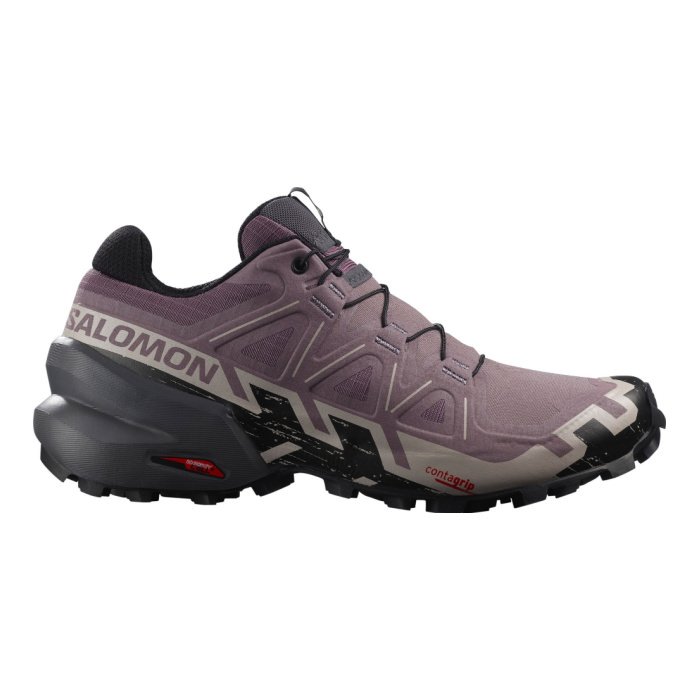
Women’s Salomon Speedcross 6
Best Trail Running Shoes for Soft Terrain
Price: $145
Weight (Pair): 1 lb. 2.2 oz.
Heel-to-Toe Drop: 10 mm
Cushioning: Moderate
Best For: Soft trail
Pros
- Excellent traction on soft terrain
- Supportive
- Very durable
- Good energy return
Cons
- Narrower fit
- Not as versatile as others
The Salomon Speedcross 6 excels on loose terrain. These trail runners have deep lugs that provide awesome traction in mud, sand, snow, and other soft surfaces. If you’re often tackling trails that fall into these categories, there’s no better shoe on the market.
Salomon’s proprietary Contagrip Mud outsole is what makes them great. The wide gaps between the lugs leave little consistent surface area for mud to cake up, and the lug depth allows these shoes to bite into soft ground.
This specialist shoe is incredibly durable and provides a secure, locked-in fit that keeps you from feeling sloppy on loose terrain. Despite the tall stack height, the lateral support is enough to make the Speedcross feel stable when navigating obstacles on trail.
Versatility is where this shoe falls a little short for us – the soft lugs wear down quickly on rocky ground and pavement. If you’re not spending most of your time on soft trail, this probably isn’t the shoe for you. Unless you’ve signed up for a mud run, we recommend those wanting a more adaptable shoe that works on almost any type of terrain go for the Saucony Peregrines.
If mud runs and sandy trails are your jam, the Speedcross is your shoe. It’s not bad to have in your arsenal if you have the budget for multiple pairs, but runners who need something more well-rounded should look elsewhere.
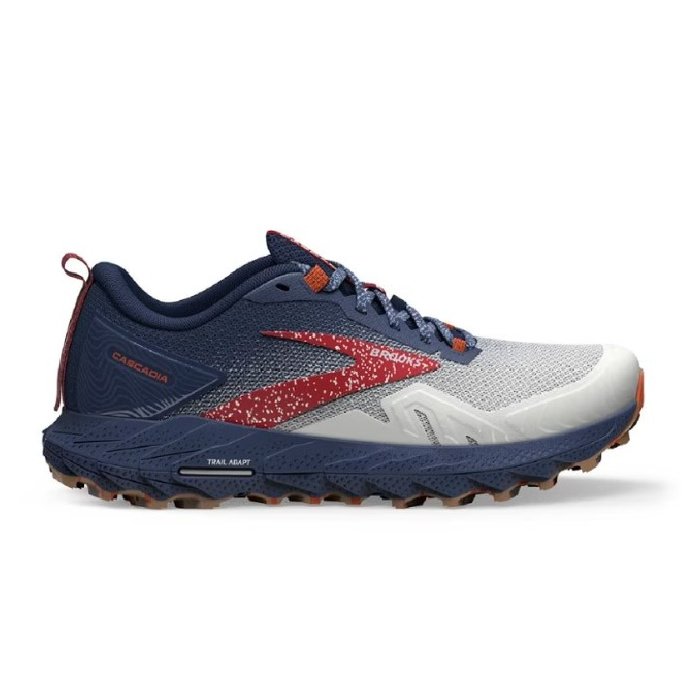
Women’s Brooks Cascadia 17
Versatile Trail Running Shoe with a Stable & Durable Build
Price: $140
Weight (Pair): 1 lb. 3.6 oz.
Heel-to-Toe Drop: 8 mm
Cushioning: Moderate
Best For: Rugged
Pros
- Less expensive
- Versatile
- Very durable
- Stable build
- Wide sizes available
Cons
- A bit heavy
- Not as breathable as some
The Brooks Cascadia 17s are well-rounded trail runners that appeal to a wide audience – from marathoners to hikers to casual runners. Their comfy cushioning, stable build, and exceptional durability make them stand out against other all-rounders.
The Cascadias excel on runs where having a ton of support is key, such as traversing rocky ridges and navigating root-laden forest trails. The upper has a structured design which, when combined with the wide base of the outsole, helps keep your foot in a neutral position while navigating tricky obstacles.
The Cascadias are a bit heavier than many others, but – as is often the case with heavier gear – they’re more durable than most of the lightweight trail runners on the market. The tightly woven mesh of the upper contributes to the durability, but it also makes these shoes feel a bit stuffy in warm conditions.
Small gripes aside, the Cascadias are well-balanced running shoes that can take on just about any type of trail. These shoes are a great choice for casual runners and those on a budget since their versatility makes them such a good value.
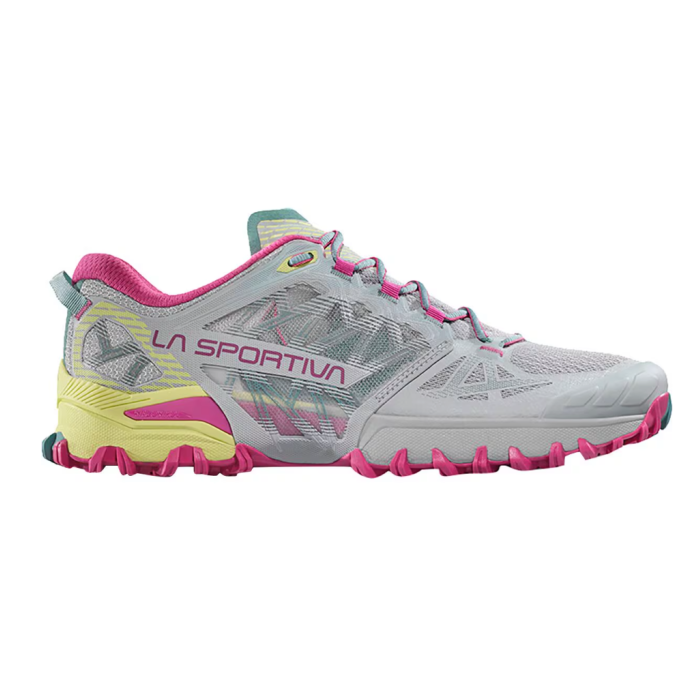
Women’s La Sportiva Bushido III
Durable Trail Runners for Rugged Mountain Trails
Price: $145
Weight (Pair): 1 lb. 1.6 oz.
Heel-to-Toe Drop: 6 mm
Cushioning: Moderate
Best For: Technical terrain
Pros
- Exceptional traction
- Very durable
- Lightweight
- Stable build
- Protective
- Wide sizes available
Cons
- Stiff
- Narrower fit
The La Sportiva Bushido IIIs are capable shoes with awesome traction for tackling technical terrain. These shoes excel on off-camber routes and challenging mountain trails where stability is key.
One of the Bushido’s greatest assets is its durability – the mesh zones are reinforced with a ripstop overlay, and they feature a stout rubber toe cap to protect against rocks. The soles and the lugs on the Bushidos are a bit stiff, so they’re not ideal for runners who prefer a cushioned ride. But this design means that the lugs won’t wear down as quickly as those made with soft rubber on the outsole.
The durability and stability of the Bushidos is even more impressive when you look at the weight. These shoes are incredibly light for how protective and durable they are, which further helps to keep you moving fast through the mountains.
This newest iteration of the Bushidos features several improvements over the previous generation, including availability in wide sizes. We find the standard model a bit narrow, so this will be a welcome upgrade for runners who need more wiggle room. Other updates include a redesigned rubber compound on the outsole, a new tread pattern with enhanced traction on uphill routes, and a slightly more breathable upper.
Runners seeking a lightweight shoe that doesn’t compromise on traction or support for handling technical terrain at speed will find the Bushidos to be a good match. They’re a bit stiffer than others, so we recommend them for shorter runs. Those wanting something softer with similar capabilities will likely prefer the Brooks Cascadias.
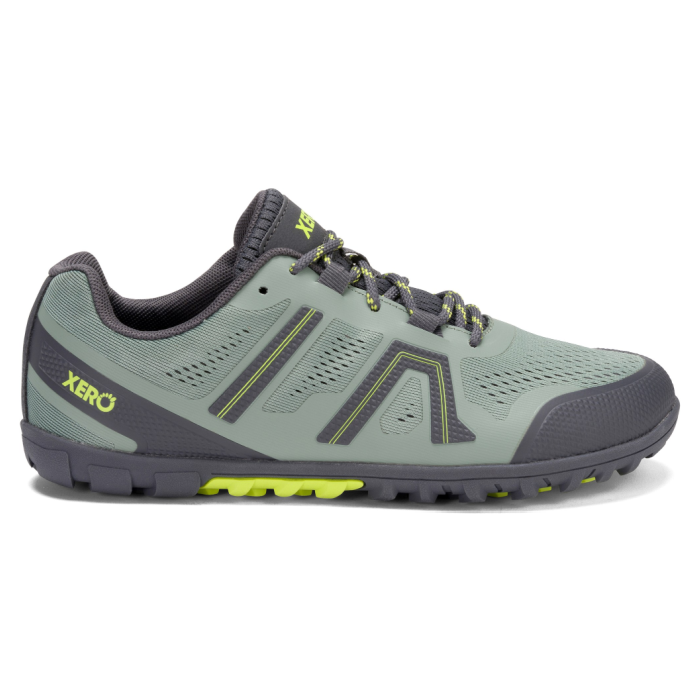
Women’s Xero Shoes Mesa Trail II
Best Barefoot Trail Running Shoes for Women
Price: $120
Weight (Pair): 13.4 oz.
Heel-to-Toe Drop: 0 mm
Cushioning: Barefoot
Best For: Groomed trail
Pros
- Less expensive
- Ultralight
- Very durable for the weight
- Unrivaled ground feel
- Roomy toe box
Cons
- Traction isn’t as versatile
- Minimal cushioning won’t appeal to everyone
- Can feel sharp rocks through
Barefoot running has been gaining popularity over the last few years, and the Xero Shoes Mesa Trail IIs are our absolute favorites from the category.
What makes the Mesa Trails stand out among the sea of barefoot options is their exceptionally comfy foot-shaped design. These shoes provide a secure fit while also allowing plenty of room for your toes to spread naturally. Many barefoot running shoes aim to nail the perfect natural shape, but we haven’t found a pair that balances roominess and lack of rub points as well as these.
As the name would imply, barefoot shoes are meant to feel as though you’re running without shoes on. That means the Mesa Trails are ultralight, but it also means they don’t provide much in the way of cushioning. While many runners really embrace this connection with the trail, it’s decidedly not for everyone. You’ll feel sharp rocks and thick roots through the sole of the Mesa Trails, and the lack of cushioning can be really taxing on your feet and joints if you’re not used to it.
That said, if most of your runs are on groomed trails with soft terrain – like a dirt path in a forest – the Mesa Trails can provide a wonderful experience. If you’re new to barefoot running, we recommend buying these shoes well in advance of any big runs you have planned so you can test the waters.
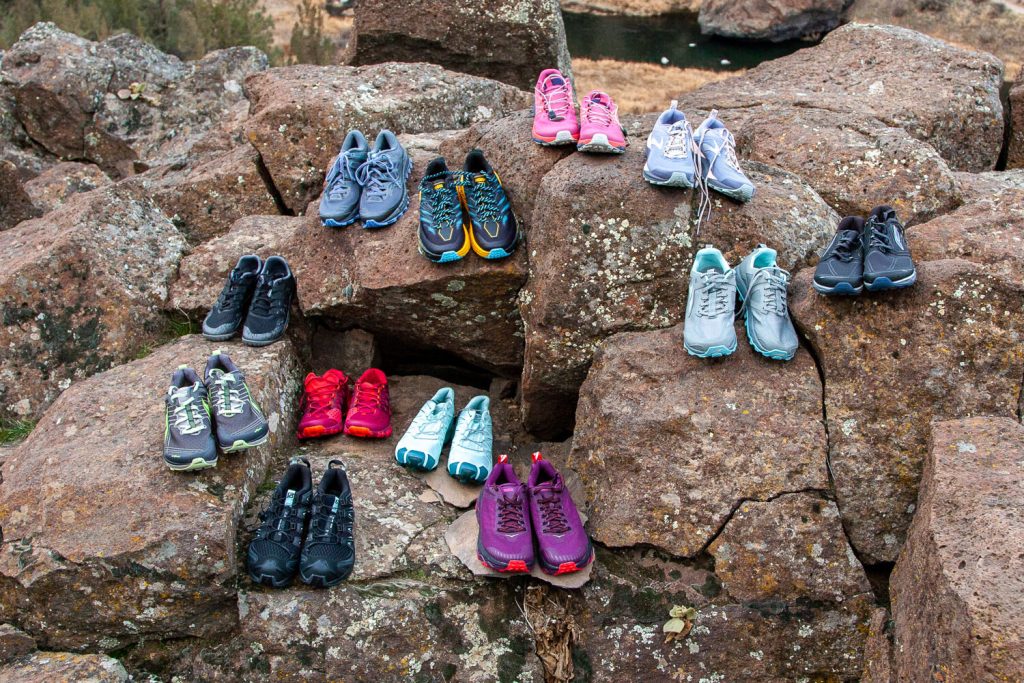
Product Comparison Table
| oSort | Product | Price | Weight (Pair) | Heel-to-Toe Drop | Cushioning | Best For |
|---|---|---|---|---|---|---|
| 0 |
HOKA Speedgoat 5 View at REI View at Amazon |
$155 | 1 lb. 1 oz. | 4 mm | Maximum | Mixed terrain |
| 1 |
Salomon Sense Ride 5 View at REI View at Backcountry |
$140 | 1 lb. 1.4 oz. | 8 mm | Moderate | Road to trail |
| 2 |
Altra Lone Peak 8 View at REI View at Backcountry |
$140 | 1 lb. 2.3 oz | 0 mm | Moderate | Mixed terrain |
| 3 |
Saucony Peregrine 14 View at REI View at Amazon |
$140 | 1 lb. 1 oz. | 4 mm | Moderate | Mixed terrain |
| 4 |
Brooks Catamount 3 View at REI |
$170 | 1 lb. 0.8 oz. | 6 mm | Moderate | Mixed terrain |
| 5 |
Topo Athletic Ultraventure 3 View at REI View at Amazon |
$150 | 1 lb. 0.6 oz. | 5 mm | Maximum | Mixed terrain |
| 6 |
Merrell MTL Skyfire 2 Matryx View at REI |
$210 | 12.3 oz. | 6 mm | Light | Rugged terrain |
| 7 |
Salomon Speedcross 6 View at REI View at Amazon |
$145 | 1 lb. 2.2 oz. | 10 mm | Moderate | Soft trail |
| 8 |
Brooks Cascadia 17 View at REI View at Amazon |
$140 | 1 lb. 3.6 oz. | 8 mm | Moderate | Rugged |
| 9 |
La Sportiva Bushido III View at Backcountry View at Amazon |
$145 | 1 lb. 1.6 oz. | 6 mm | Moderate | Technical terrain |
| 10 |
Xero Shoes Mesa Trail II View at REI View at Amazon |
$120 | 13.4 oz. | 0 mm | Barefoot | Groomed trail |
What’s Most Important to You in a Trail Running Shoe?
COMFORT AND FIT
Most comfortable trail runners
Best trail runners for wide feet
PRICE
Best budget trail runners
- Saucony Peregrine 14
- Salomon Sense Ride 5
- Brooks Cascadia 17
- Altra Lone Peak 8
- La Sportiva Bushido III
- Salomon Speedcross 6
Best mid-range trail runners
Best high-end trail runners
WEIGHT
Best ultralight trail runners
Best lightweight trail runners
DURABILITY
Most durable trail runners
HEEL-TO-TOE DROP
Best zero-drop trail runners
Trail runners with a drop between 4-6 mm
- Saucony Peregrine 14
- HOKA Speedgoat 5
- Topo Ultraventure 3
- Merrell MTL Skyfire 2 Matryx
- Brooks Catamount 3
- La Sportiva Bushido III
Trail runners with a drop of 8+ mm
WATERPROOFING
Best waterproof trail runners
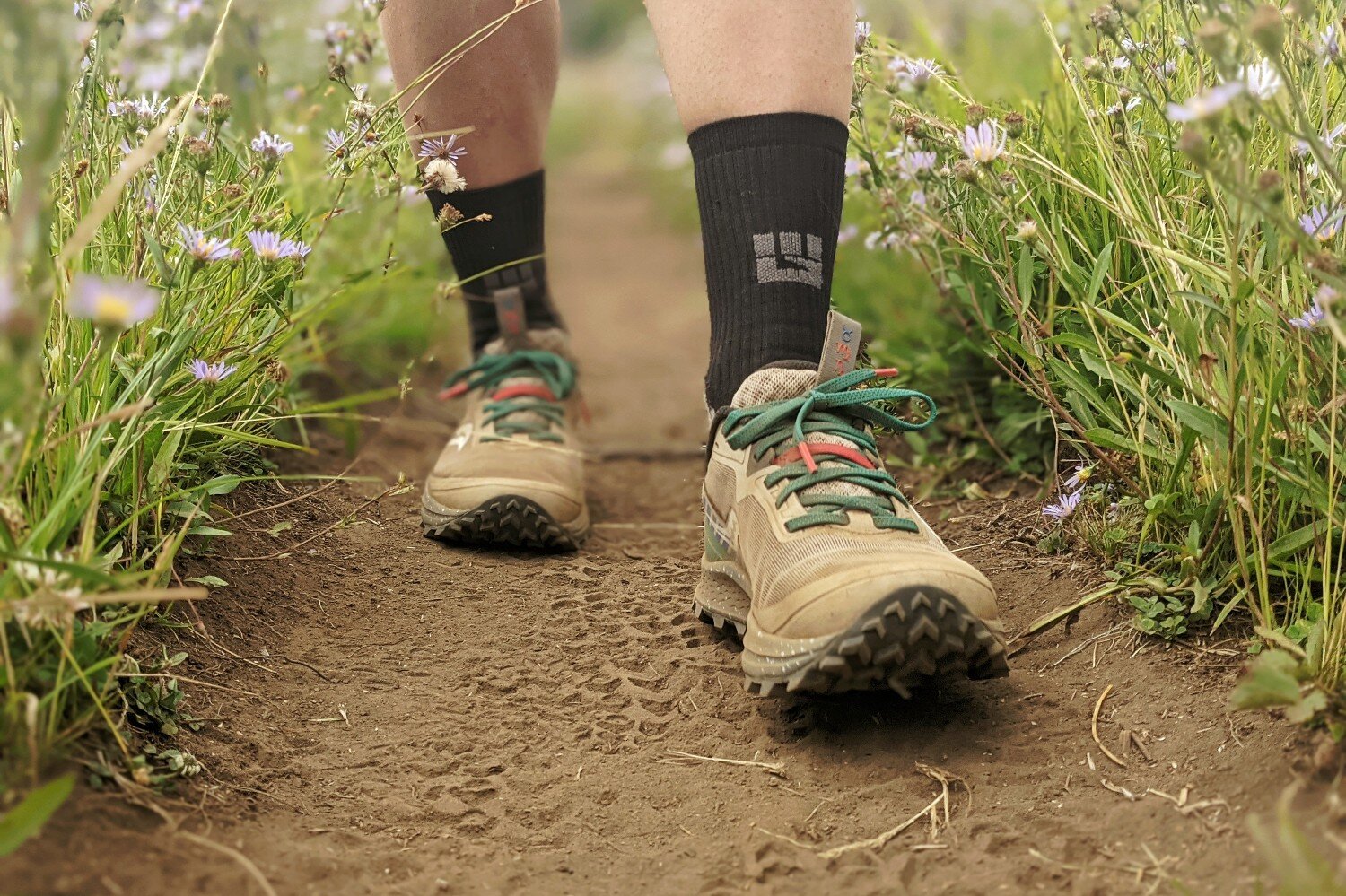
How to Choose TRail Runners for Women
SIZING
Feet can swell during long days on the trail, so it’s common to buy running footwear a half or full size larger than your day-to-day shoes if you plan to put up big miles on your runs.
If you’re going with your usual size, test sizing on your shoes by loosening all the laces, situating your foot so that your toes touch the front of the toe box, then making sure you can put your index finger between your heel and the back of the shoe. This will ensure that your toes don’t slide forward and hit the toe box on downhill sections of trail. You should also consider which socks you’ll be wearing and if you’ll be adding aftermarket insoles when choosing a size – be sure to bring these things with you if you try on new shoes at the store. It’s much better for footwear to be a little big than too small.
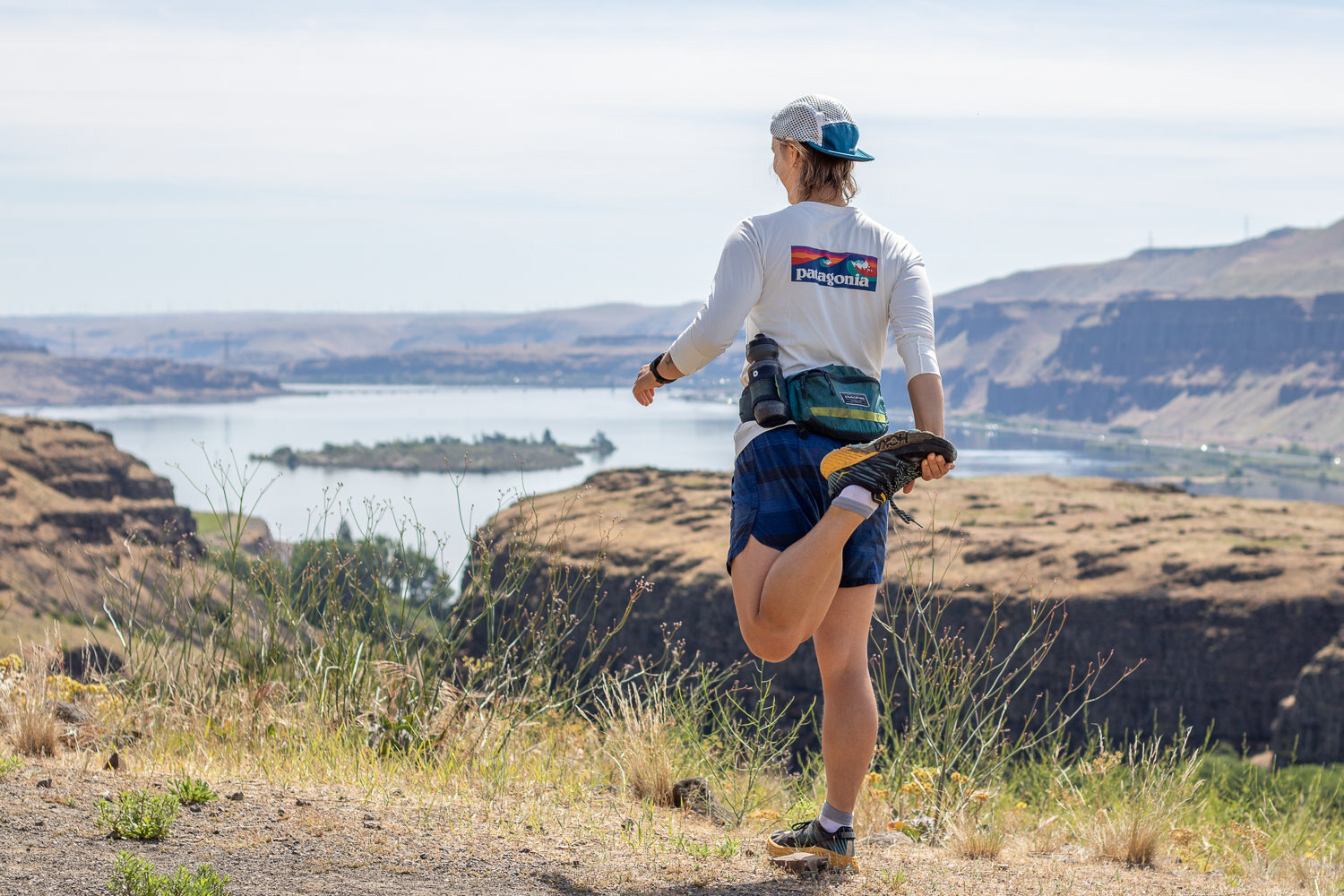
WEIGHT & DURABILITY
Many trail runners are designed with lightweight materials that sacrifice a little bit of durability in favor of weight savings and comfort. Trail running shoes that are mostly constructed with light mesh will be more breathable but less durable than those made of a thicker mesh and sturdy nylon overlays. We typically run in lightweight trail runners because nimble feet lead to less muscle fatigue, less stumbling, and over time can help avoid knee and hip flexor problems.
That said, if you often run on pretty gnarly trails, shoes that are a bit heavier can have the advantage in durability. Trail running shoes will often have some sort of overlay on the mesh to provide reinforcement in key spots as well as a rand or toe guard that protects high-impact areas of the shoe. Trail runners with this build will usually provide the best balance between comfort and durability, but they may not be the lightest.
If durability is your number one priority, stick with trail running shoes that have a wraparound rand, deep lugs on the outsole, and welded – rather than sewn – seams.
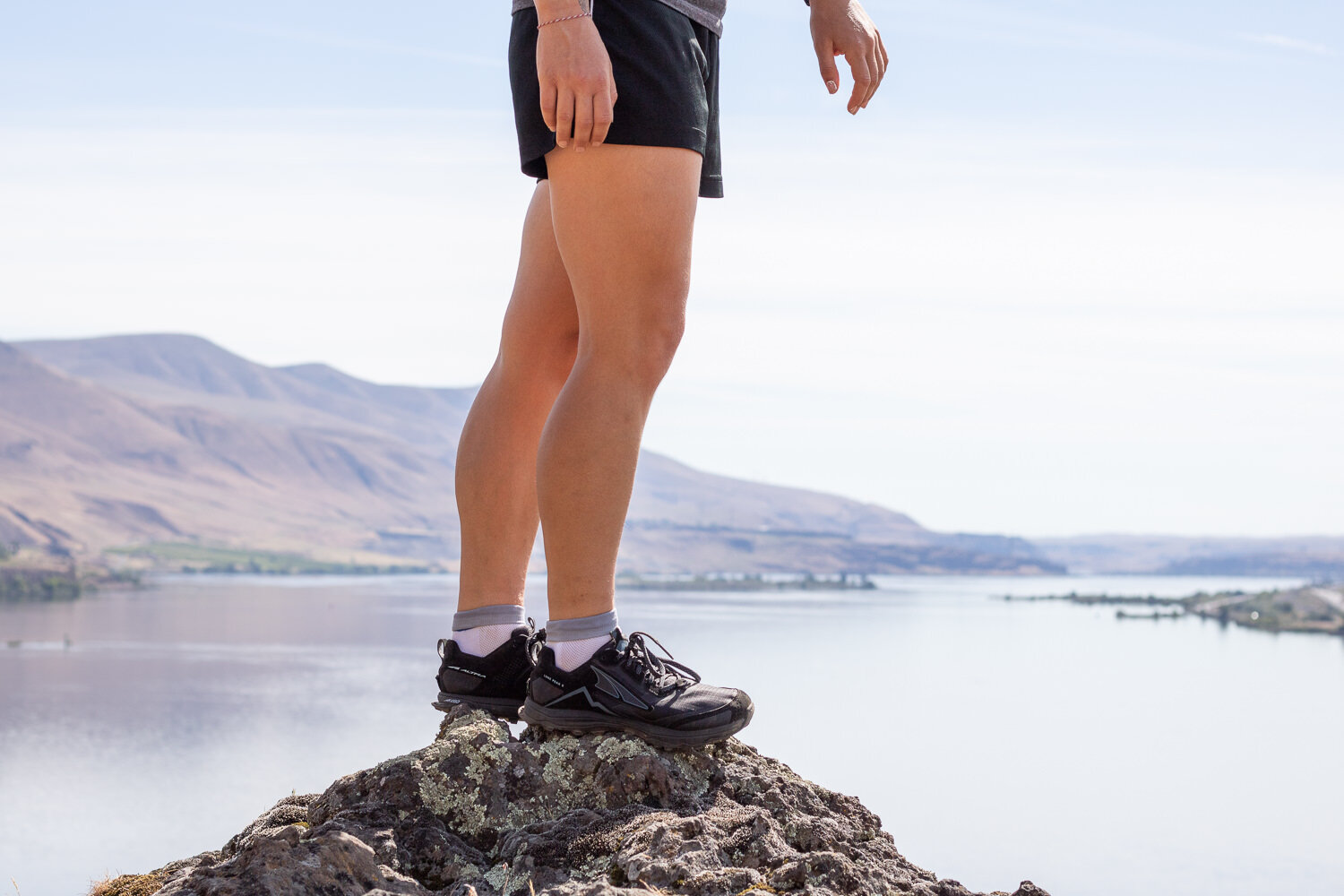
HEEL-TO-TOE DROP
It’s common for shoes to have a noticeable decrease in height from the heel to the toe. This difference in height is called the heel-to-toe drop, and it can help encourage your foot to move in an efficient way.
Heel-strikers do well with a higher heel-to-drop in the 6 millimeter and above range, while forefoot and midfoot strikers typically prefer a drop below 6 millimeters.
Some modern trail runners are zero drop, meaning your foot is the same distance off the ground from heel to toe. Proponents of zero drop say that it allows for a more natural gait which could put less stress on your body. It’s common to go through a couple weeks of adjustment period when switching to shoes with zero drop for the first time since they can put strain on your feet and Achilles if your body isn’t used to this style.
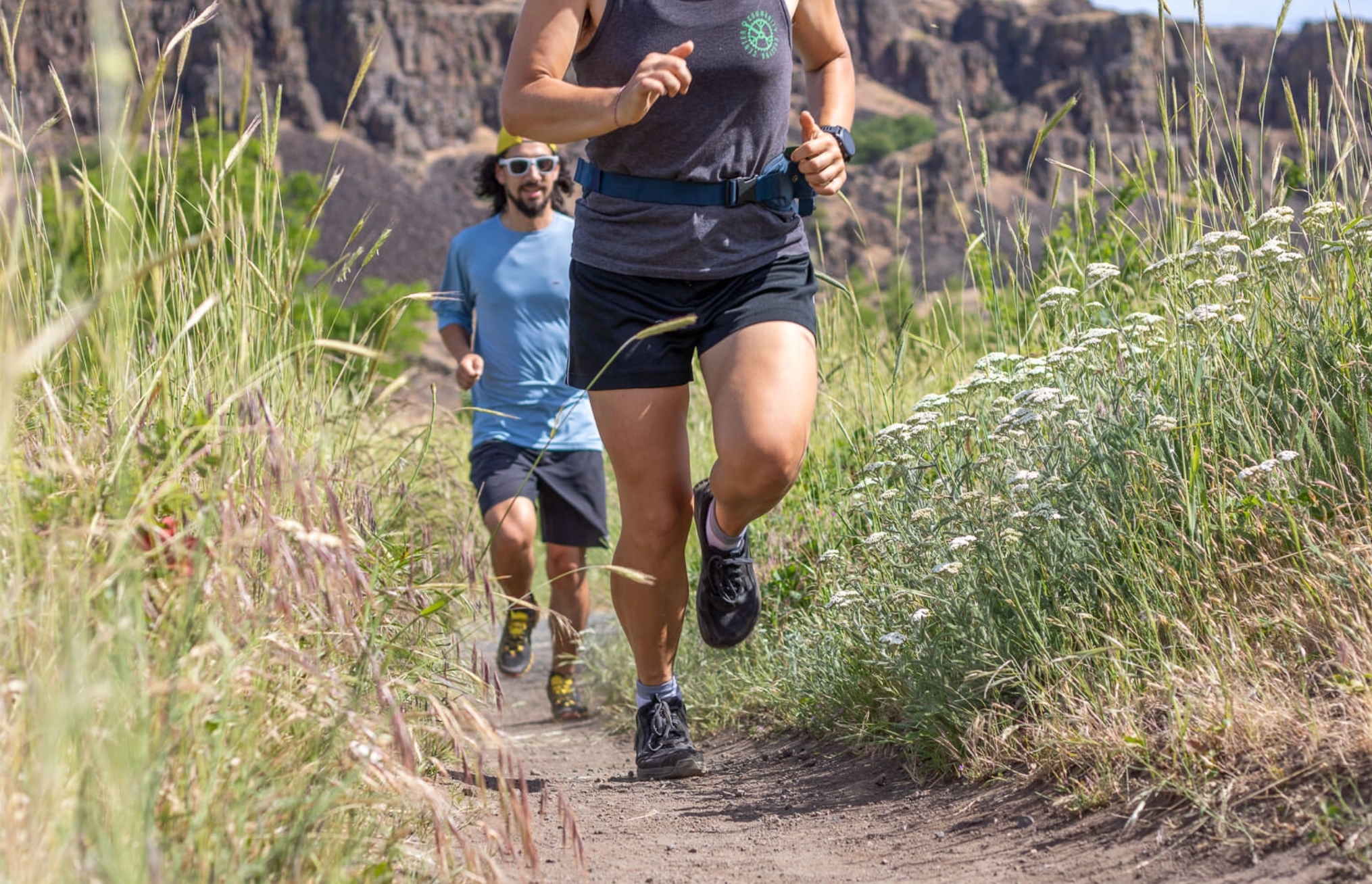
TRACTION
Your trail runners will take you over narrow and rocky ridge lines, through slippery water crossings, and across loose scree fields. Knowing that your footwear will keep you from slipping is crucial, especially over washed out or exposed sections of trail. We heavily factored quality traction into all of our footwear recommendations. Running in snow or ice? You’ll probably love our guide to the Best Traction Devices.
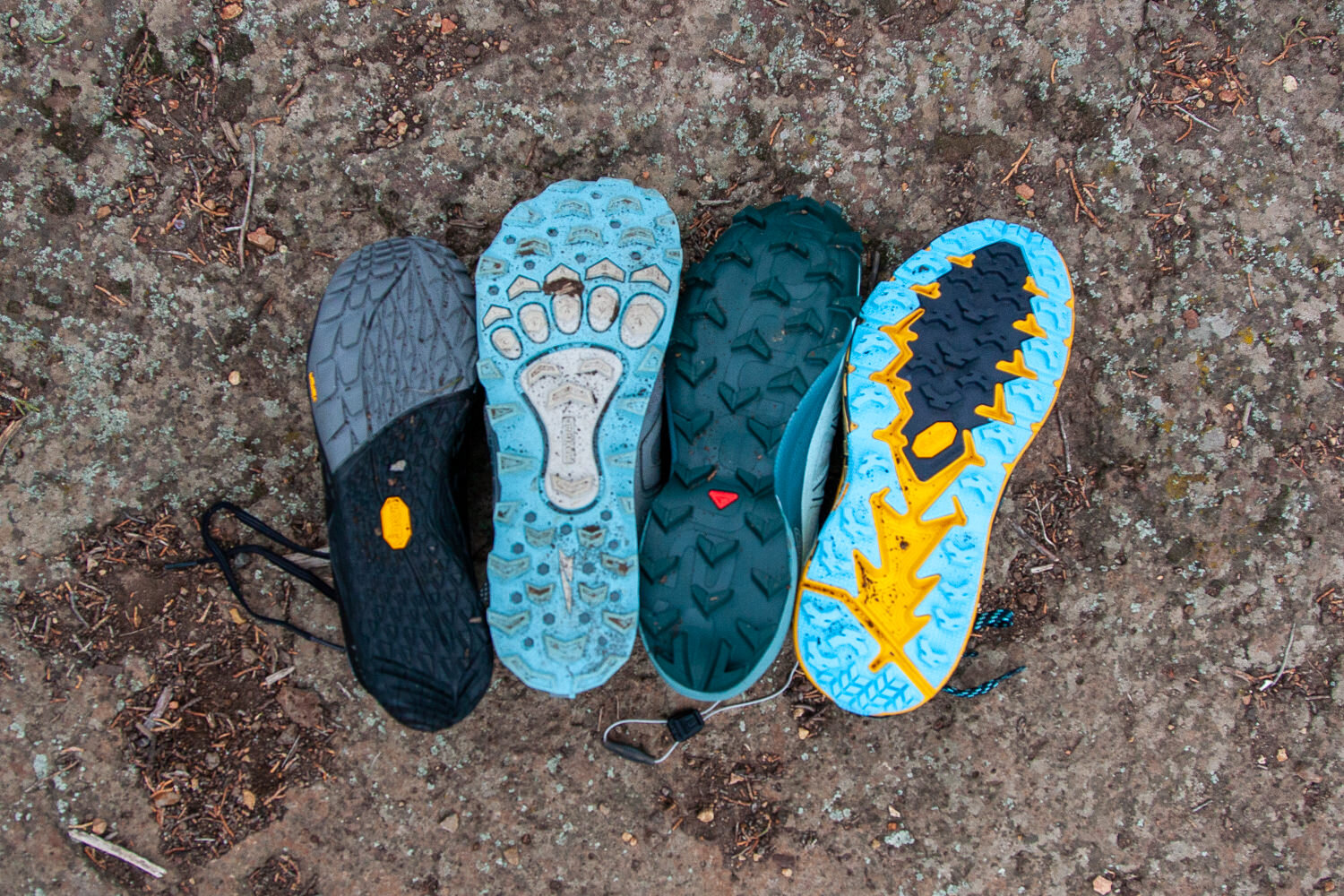
SOCKS
We’ve found that wearing quality socks makes a big difference in how long we can keep our feet happy and in good shape on trail. Running socks should be comfortable, durable, and made with materials that wick moisture away from your skin. Check out our Best Hiking Socks list to see our top picks.
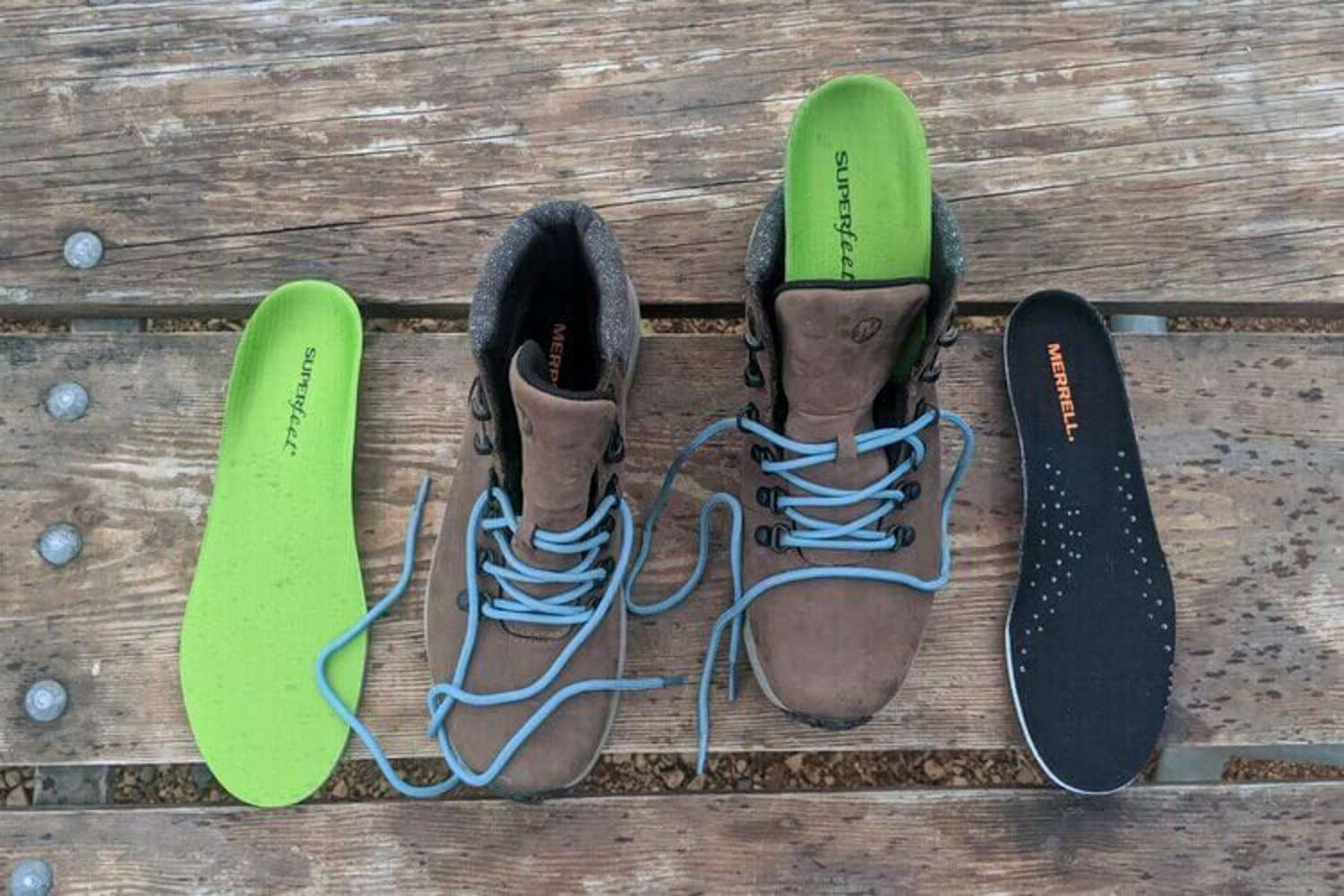
INSOLES
Aftermarket insoles can help alleviate a variety of shoe discomforts on the trail. If you suffer from plantar fasciitis or you just need more cushioning and support in an otherwise rigid shoe, swapping insoles may be your solution. Insoles can also help take up a little extra space in footwear for a customized fit if you’re between sizes.
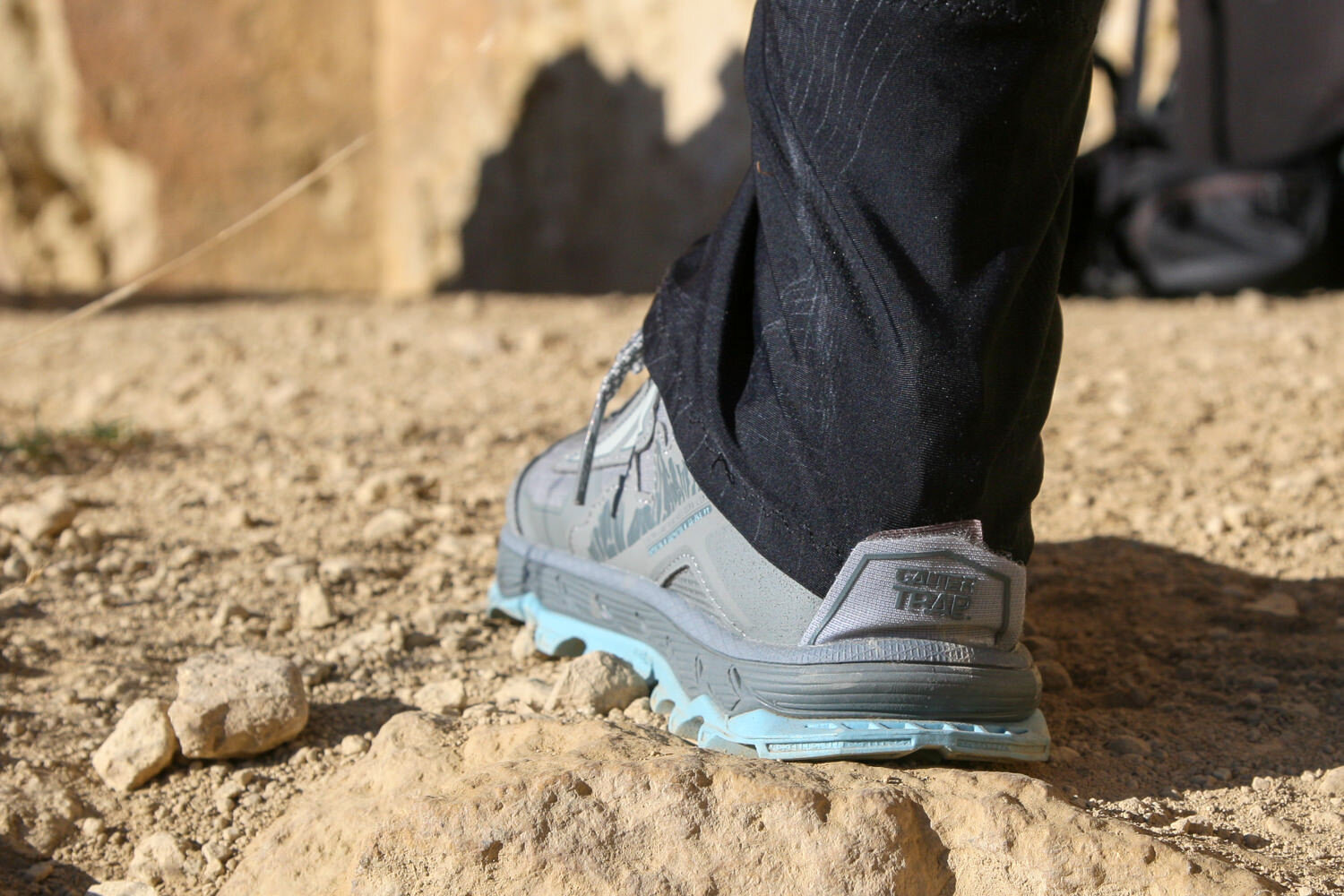
GAITERS
Gaiters are great for keeping sand and small pebbles from getting into your shoes, which helps prevent blisters and other pains underfoot. If you know you’ll be running on loose terrain, we recommend adding a lightweight pair of gaiters to your shoes. Some – though not all – trail runners come with a built-in Velcro gaiter trap at the back for easy attachment.
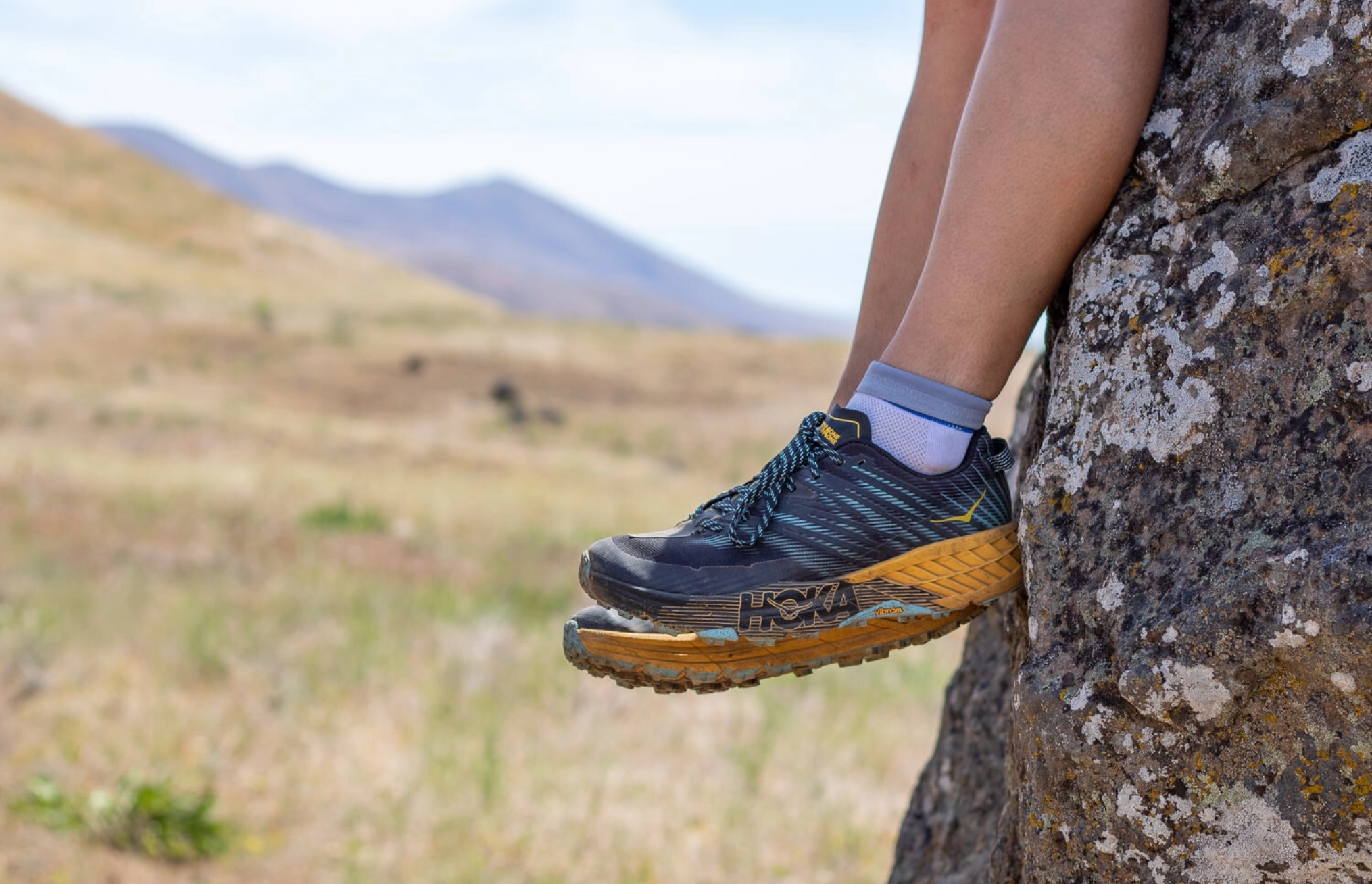
HIKING
We love trail runners because they’re so versatile. Of course they’re the best choice for running on trails, but they’re also great for hiking and lightweight backpacking. The CleverHiker team has hiked thousands of miles in trail runners over some of the toughest terrain on the planet in places like the Himalayas, Andes, and the Rockies. Trail runners are our first choice for almost all of our 3-season backpacking trips, and they’re also the most common choice for thru-hikers tackling long distance trails like the AT and PCT. Check out our list of the Best Hiking Shoes for Women to see which trail runners are our favorites for hiking.
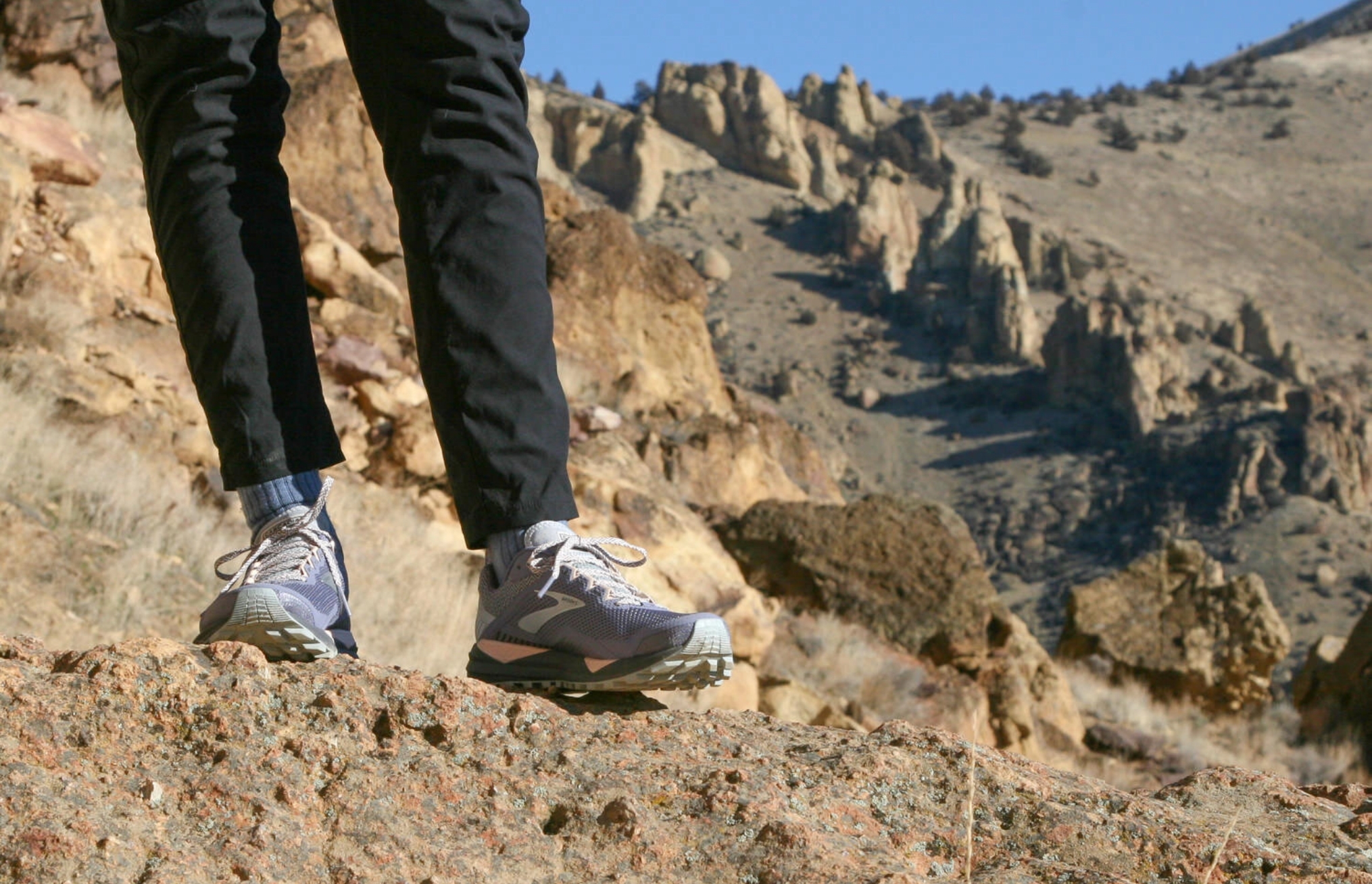
MANAGING MOISTURE & BLISTERS
If you’re on an extended run in wet conditions or you find yourself caught in a downpour, your feet will likely get wet no matter what type of footwear you’re wearing. Wet feet can lead to hot spots and blisters, but this can be prevented if you have a healthy foot care routine. Whether you run in waterproof or non-waterproof trail runners, be sure to check out our post on How to Prevent and Treat Blisters for more info on moisture and blister management.
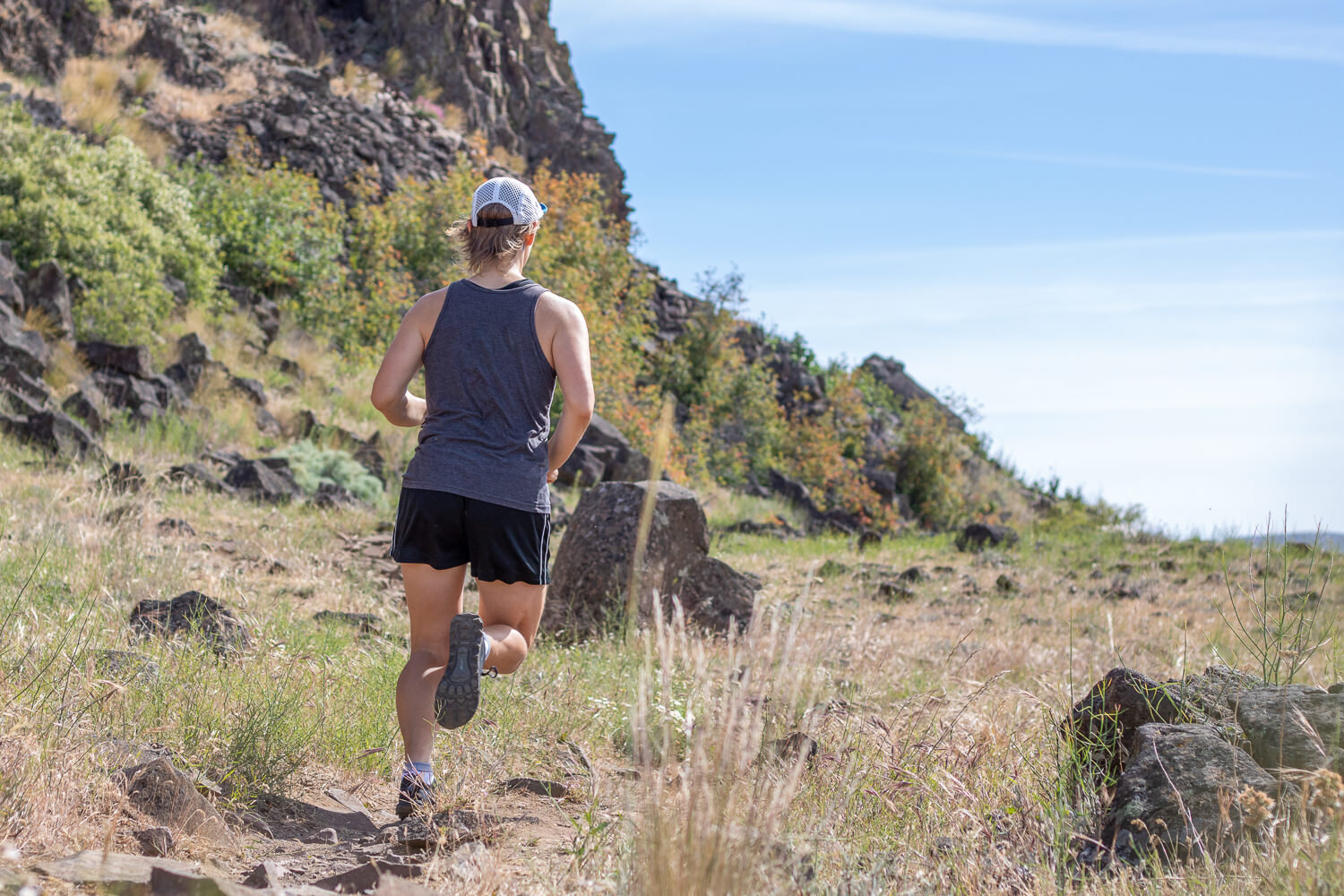
WATERPROOF VS. NON-WATERPROOF
Waterproof shoes can be a real lifesaver if you often run in wet, muddy areas. They also collect less blister-causing debris than non-waterproof mesh shoes. On the other hand, waterproof shoes aren’t very breathable, and they can be heavy and slow to dry when they get wet.
It’s important to remember that “waterproof” doesn’t mean that water can never get in. Water always finds a way in during a prolonged downpour, and light rain can drip down your legs and into your shoes. Waterproof treatments are not permanent, and you’ll eventually need to reapply a treatment to keep your shoes sealed.
Non-waterproof shoes are more breathable, they dry quickly, and they’re often lighter. We tend to prefer non-waterproof shoes most of the time, but we’ll sometimes use waterproof trail runners in fall and winter to keep our feet warmer.
